
- Arts & Crafts
- Music & Activities
- Health & Safety
- Kids Kitchen


Mathematical Reasoning Beginning 2
By the critical thinking co..

Mathematical Reasoning™ helps children devise strategies to solve a wide variety of math problems. This book emphasizes problem solving and computation to build the math reasoning skills necessary for success in higher level math and math assessments. This book is written to the standards of the National Council of Teachers of Mathematics. The Beginning 2 book is a complete curriculum for children of age 4.
These highly effective activities take children far beyond drill-and-practice by using step-by-step, discussion-based problem solving to develop a conceptual bridge between computation and the reasoning required for upper-level math. Activities and units spiral slowly, allowing children to become comfortable with concepts but also challenging them to continue building their math skills.
Other products by The Critical Thinking Co.

Search products
- Historical & Educational Books for Kids
- Classroom Activity Books
Manufacturer Details
The critical thinking co..

Mathematical Reasoning Review

If you’re looking for a flexible and rigorous concepts-based math program, either as a full curriculum or as a supplement, The Critical Thinking Co.’s Mathematical Reasoning series might be just what you’re looking for. With its visually impressive workbooks and interesting, yet challenging, problem sets and puzzles, Mathematical Reasoning meets and exceeds standards for pre K to middle school math and can help students learn to more effectively analyze and critically reason their way through just about any math problems they encounter.
What We Like
But watch out for …
What is Mathematical Reasoning?
Published by the Critical Thinking Co., Mathematical reasoning is a homeschool math program designed for preschool through middle school/junior high.
Throughout the series, students learn important skills and gradually hone their logic, critical thinking and problem solving skills by exploring key concepts and completing different activities, exercises and mathematical puzzles.
What Grades Or Ages Is Mathematical Reasoning Intended For?
Mathematical Reasoning is aimed at students in Pre-K through Grade 9, covering everything from the counting, matching and order skills of beginning numeracy to the tessellations, congruences and slopes of middle school geometry and beyond.
To cover this wide range of grades and topics, the series is split into three levels:
- Mathematical Reasoning Beginning
- Mathematical Reasoning Levels A-G
- Understanding Pre-Algebra/Algebra 1/Geometry
While the program largely aligns with (and at times exceeds) NCTM (National Council of Teachers of Mathematics) standards, and while each cover also includes its approximate grade level in the top corner, the Mathematical Reasoning series can of course be used at home by students outside of a traditional grade progression.
Its books can, for example, be used by precocious learners of any grade as a core curriculum or as a supplement, should they have the appropriate math background.
That said, due to Mathematical Reasoning’s greater emphasis on strategic and critical thinking, and its frequent use of challenging math problems, we probably wouldn’t consider it an ideal program for older, struggling students who want to brush up on the fundamentals.
Placement tests
Although it is standards-aligned, it should be noted that Mathematical Reasoning can be something of an advanced curriculum, introducing certain concepts ahead of a typical scope and sequence.
As such, it can be a little more challenging for parents switching into it from another program to know where to start with the series.
Unfortunately, at time of writing, there is no real placement test for the series, so parents will have to make a judgment call based on the book’s stated grade level, its topical coverage and their student’s math knowledge and skill level.
What’s Required to Teach Mathematical Reasoning?
Mathematical Reasoning is a pretty compact program, all things considered.
At each level, the combined workbooks and texts are the only real required component for learning.
Unlike other math programs out there, there are no teacher’s manuals or kits to purchase, although the company also sells a line of supplemental books that can be used to strengthen learning.
Mathematical Reasoning Workbooks
For the most part, students and parents largely work out of the Mathematical Reasoning workbooks.
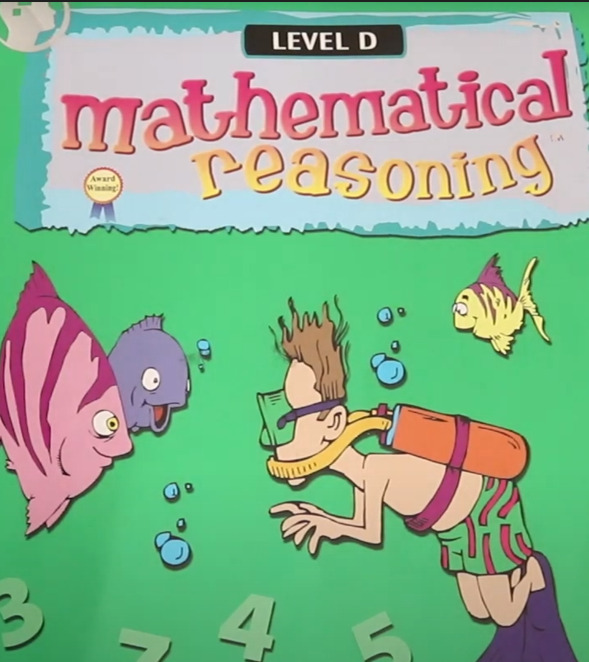
These are ~200-400 page, consumable, full-color softcover (or non-consumable digital) workbooks that include all the materials needed to work with the program. The books include basic math instruction and teaching tips, various exercises and puzzles, as well as the occasional link to some digital resources.
The Mathematical Reasoning series is highly visual and its books are filled with page after page of big, colorful drawings, math puzzles and puzzles.
Each page is color coded by math topic, so finding a particular concept to work on is quite easy to do, which is a definite plus when using the program as a supplement.
Similarly, each math strand or category is referenced at the top of the page, so students (and/or parents) can easily keep track of what they are doing.

In terms of instruction, the books start out mainly offering simple exercise instructions, perhaps reflecting the relatively fundamental math involved and the greater need for parental supervision with younger students.
As the series progresses, however, there is a marked increase in math instruction, which is largely aimed at the student.
Although generally pretty brief, the instruction offered in lessons is quite clear and should be easy for students to understand (being written at around the right grade level in our opinion).
Yet, despite this approachable tone, these books do consistently use the proper mathematical terminology for concepts, which is something we appreciate.

By staying approachable but not dumbing things down, the Mathematical Reasoning books can make it a lot easier for students to work more independently while still getting a thorough and professional exposure to math theory.
At the end of each book there is an answer key and glossary, something that can be very helpful for parents guiding the learning, especially at later levels.

For more advanced concepts, the company also offers free detailed solutions manuals that offer step-by-step explanations and solutions for questions, which is very useful for both students interested in learning more and parents who might be a little rustier in their own middle school math skills.
One thing that parents should be aware of with the Mathematical Reasoning workbooks is that, due to the way the program is structured, lessons and pages in the books can look quite different from one another on any given day.
Some lessons may have pages with a lot of problems and formal instructions on them, while others may contain fewer problem sets.
Students who really do best with routine and consistency between lessons may therefore find the series a little more challenging to get through, although it can be a good option for students who get bored with repetitive lessons.
Optional Supplements
Manipulatives.
Although Mathematical Reasoning isn’t quite as hands-on as some other programs out there, at times (especially earlier in the series) it can recommend parents use manipulatives to help students grasp some of math’s more abstract concepts, and does offer some exercises and ideas for instruction around their use.
While the program doesn’t come with any physical manipulatives per se, these can be picked up fairly inexpensively on the internet.
Further, for those who don’t mind working a little more digitally, the workbooks do offer links to the National Library of Virtual Manipulatives, which offers a wealth of simulated math manipulatives, as well as related activities and ideas for using them to explore different math concepts.
Mathematical Reasoning Supplemental Books
In addition to the main Mathematical Reasoning workbooks, the Critical Thinking Co. also offers a series of supplemental books to go with the program.
Each supplement covers a range of grades, such as grades 2-4, 4-6, 7-9 and Essential Algebra, so they don’t necessarily correlate 1:1 with the main series and are best used after completing a couple of levels.
By and large, these supplemental books dive a little deeper into the concepts taught in the main program, offering additional work to help build skill fluency and challenging students with more complex and/or unusual takes on traditional math problems that can stretch their critical thinking skills a bit further.

Printed in black and white and having far fewer illustrations than the main series, these supplemental books aren’t quite as visually appealing, but do contain quite a few more interesting puzzles, exercises and challenges with (thankfully) full solutions printed in the back.
Approach To Teaching Math
Conceptual math.
Mathematical Reasoning is a conceptual math program.
In other words, during the course of their studies with the program students will dive more deeply into understanding the why behind math, that is why math operations work the way they do, why and how certain formulas and procedures work the way they do and how to analyze a problem in order to understand its essential logic.
As a result, and perhaps unsurprisingly given its name, Mathematical Reasoning has a stronger focus than many other math programs on getting students to critically analyze and reason their way through math.
In practical terms, rather than having students do a lot of drill and rote memorization, the lessons place more of an emphasis on problem solving, math puzzles and even (at upper levels, particularly) exploring multiple approaches, strategies and solutions to problems.

Consequently, students can get a very strong understanding of what they are doing with Mathematical Reasoning, becoming more comfortable trying out different strategies to solve problems, which can ultimately translate towards greater confidence when faced with new or unusual math problems.
This more conceptual approach to teaching math stands in contrast to more traditional programs, such as Saxon, where the focus is more on how to do math.
In such programs, students tend to spend more time learning math facts, doing computational drills and practicing very particular steps and procedures in order to solve math problems quickly and accurately.
On the downside, with a stronger emphasis on understanding and critical thinking, Mathematical Reasoning tends to have fewer practice problems per page and per topic, particularly when it comes to fluency-building drill and computational problems, than a traditional, procedural program might have.
Students who tend to need more practice to “get” a concept may therefore need to supplement the workbooks with further problems (either with the ready supplements or with those from another program).
Spiral Curriculum
Mathematical Reasoning is also a spiral curriculum.
This means that it tends to break math concepts down into smaller, bite-sized pieces rather than approaching them as a whole.
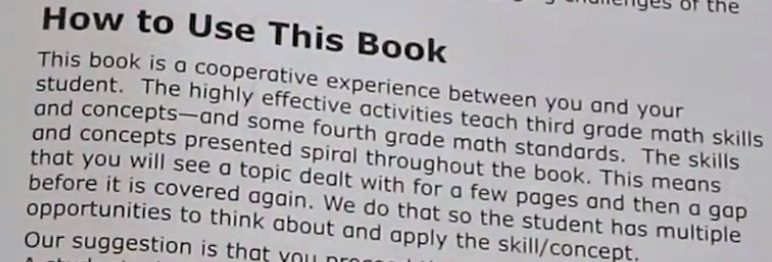
It will then introduce one of these topic pieces, work on it for a while and then move onto another topic, revisiting the first in greater depth later on in the book and the series.
This is in contrast to a mastery approach to teaching math, which approaches each math topic as a whole, exploring them completely and only moving on to another one when a student can demonstrate a level of proficiency (“mastery”) with it.
As a result of its spiral approach, with Mathematical Reasoning students get something of a break after working with each math topic, moving on to new topics pretty regularly, which can keep learning fresh and lessons a little more dynamic.
In addition, this spiral of learning tends to revisit topics pretty frequently across the program, which gives students more opportunity to practice and review concepts over time, which can help strengthen their understanding and skill level in the long run.
That said, it should be noted that while many students enjoy and benefit from a spiral approach, others can perceive it as a bit jarring or rushed and may prefer to take their time and work on one thing at a time until they really understand it thoroughly.
Visual Learning
Particularly at the Pre-K through elementary grades, Mathematical Reasoning takes a very visual approach to teaching math.

The workbooks frequently use colorful graphics and work with visual representations of numerical concepts.
During their lessons, for example, students might examine pies to develop an early sense of fractions, work with drawn number cubes, use various drawings of people or things to represent numbers in an equation, and much much more.
Not only can this visual approach make the books look more appealing to look at and make them more useful for visual learners, but they can help younger students come to terms with many of math’s more abstract or intimidating concepts by providing them with a more readily understandable and approachable representation.
Additionally, by frequently using symbols and drawings in the place of numbers, Mathematical Reasoning can also help students get more comfortable with algebraic reasoning from a younger age by helping them understand that symbols can often represent unknown numbers in equations or problems, which is kind of cool.

How It Works
Mathematical Reasoning is fairly straightforward to use as far as math curricula go.
Each book in the series is divided into a number of skills adhering to (and often going beyond) NCTM (National Council of Teachers of Mathematics) standards for that grade.
Because it is a spiral curriculum, as we mentioned above, each skill is broken up into smaller bits and introduced a little at a time over the course of each book.
As a result, at least until about the middle school level, books in the series tend to have a large chart at the front of the book rather than a traditional table of contents.
This chart provides the different locations in the book for each skill, as well as readily showing their connection to broader stands or categories in math, as can be seen in the example below.

There are two ways that Mathematical Reasoning can be used by homeschoolers – as a standalone math curriculum or as a supplement to another curriculum.
If it is used as a main curriculum, students can simply start at the beginning of a book and work forward.
The books tend to begin with a brief section aimed at parents that serves to both introduce the math topics at hand and provides some important teaching advice for more effectively introducing concepts to students, as well as some troubleshooting tips that can help when things go wrong.
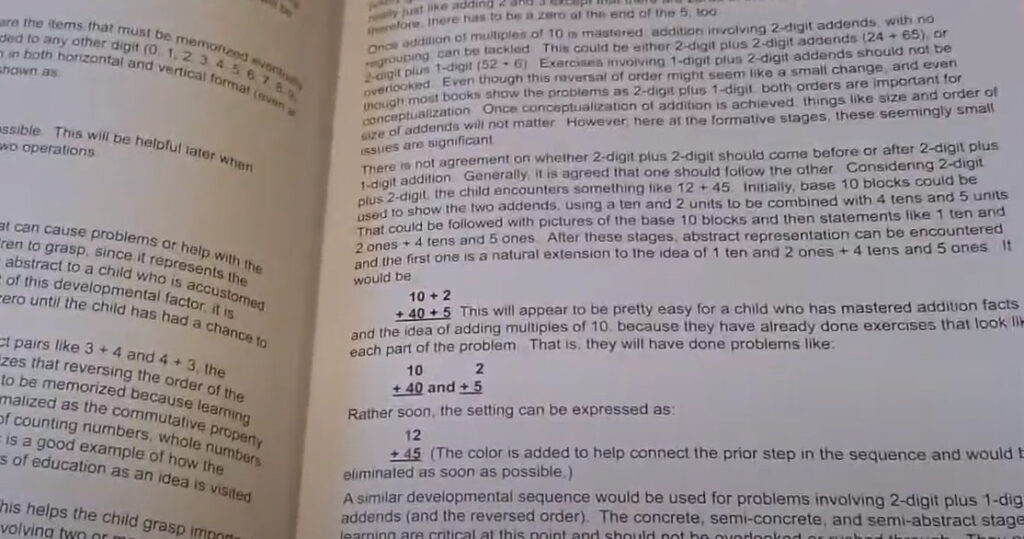
After this, lessons then begin.
Where necessary (mostly starting in the elementary grades), each lesson in the book begins with a brief introduction of a math concept, including step-by-step demonstrations.

At upper levels, because Mathematical Reasoning is a strongly conceptual math program, these introductions will often discuss alternative strategies and approaches that students can try out to solve problems in different ways.

Following this concept introduction, students are then presented with a variety of related exercises to complete.
While some of these exercises are familiar computational and word problems, Mathematical Reasoning workbooks also include a wide variety of mathematical puzzles and challenges that are designed to get kids analyzing and thinking more deeply/critically about how to apply a math concept, reasoning their way through math so to speak.
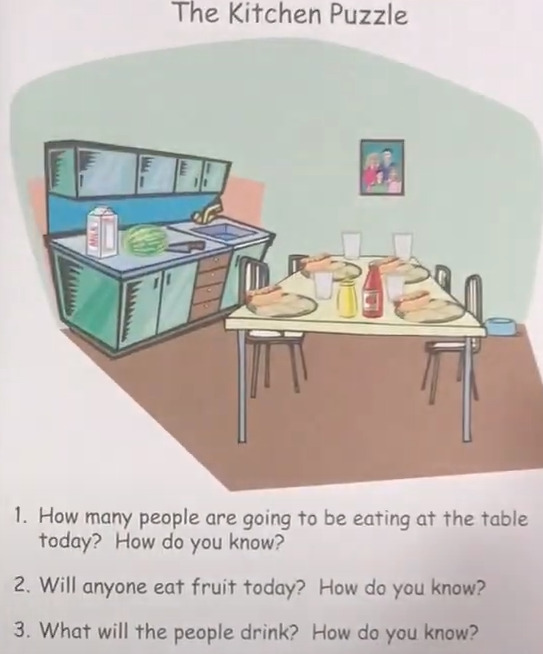
Depending on the level, for example, students might have to figure out the area of an oddly-shaped house floor plan, use their math skills to navigate grids and solve a riddle, find the wrong answer in a list of numbers, or determine whether certain math logic statements or rules are true or false.

At higher levels, such as in Pre-Algebra, Algebra 1 and Geometry, students are often challenged to prove a particular math statement, explaining why something may or may not be true based on their own logic and math skills and demonstrating their reasoning.

For those using Mathematical Reasoning as a supplement, the Critical Thinking Co. has actually made it pretty easy to do.
In every book, skills are color-coded, so their relevant workbook pages are easy to find, being visible from the side of the book when closed, and each particular concept in math is printed atop the page for easy reference.
As a result, students can work with the curriculum of their choice and then test their skills by finding and working with some challenging, conceptual problems in their Mathematical Reasoning workbook and even learning alternative strategies and approaches that they can add to their math toolbox, should they so choose.
Our Thoughts
Overall, we feel that Mathematical Reasoning can be a very effective and useful math program.
The workbooks do dive fairly deeply into math concepts, even at the younger age levels, offering lots of challenging puzzles that we feel can encourage students to think flexibly and strategically about the problems they come across.
The books also offer students a wide variety of math puzzles, exercises and challenges to work through, including computational sets, word problems, multi-step problems, riddles, surveys, crosswords and more.
As a result, students aren’t as likely to get bored or tune out during lessons as they might with more repetitive programs.
Yet, despite the challenge of its curriculum, Mathematical reasoning introduces its concepts in an approachable manner that’s pretty easy for students to understand and that uses a variety of visuals and diagrams that can help them better grasp more complex and less intuitive topics.
Further, Mathematical Reasoning keeps its lessons pretty short.
Usually only a couple pages long and with exercises that often take a few minutes each, the lessons are easy to fit into even busy homeschool schedules and aren’t likely to cause a lot of frustration with students whose attention tends to wander after a while.
Finally, by including clearly written and straightforward instructions and explanations in each lesson (often aimed directly at the students), Mathematical Reasoning is a program that can be used more independently by students once they are comfortable with their reading skills.
This can be of great use to parents looking to encourage their student’s capacity for self-study, as well as for busier homeschools, as students can be set to work on each lesson with parents only needing to pop in and out to oversee the work and provide essential guidance here and there.
On the downside, there isn’t a huge amount of in-depth instruction with Mathematical Reasoning.
Although each lesson contains a topic introduction with step-by-step demonstrations, these tend to be relatively brief and to the point, and overall the workbooks tend to move students into the practice component pretty quickly.
By and large, it isn’t a program that will provide parents and students with long and detailed lessons about a given concept or one that has a more detailed teacher’s manual to accompany it.
As a result, some students who are using it as a main curriculum may have a hard time developing a full understanding of a math topic before starting practice, and may need to look elsewhere for the more in-depth explanations they need.
That said, this may not may not be an issue for more talented math students who pick things up quickly and is certainly not a problem for those intending to use Mathematical Reasoning as a supplement to another curriculum.
Similarly, while certainly interesting and challenging, there aren’t always a lot of practice problems in each lesson as there are in other programs, with some pages containing as few as one puzzle or exercise to complete.
As a result, some students may find themselves needing to supplement the program to get the practice they need in certain math topics.
How Does Mathematical Reasoning Compare To Other Math Programs
Conceptual math learning.
Mathematical Reasoning is a conceptual math program that is designed to help students better understand why they are doing what they are doing and, more importantly, to use their critical thinking and logical skills to solve tricky or unfamiliar math problems.
In this way, it is similar to programs such as Singapore Math , Math U See , Math in Focus and more.
This focus on math concepts does set the program apart from more traditional, procedural curricula and supplements, such as Saxon or even Math With Confidence , that tend to have students memorize and apply math rules, formulas and procedures and do a lot of computational drill exercises in order to help them learn how to solve problems quickly and accurately.
Mathematical Reasoning is also something of a rigorous and advanced math program that can introduce concepts a little ahead of other math programs and tends to eschew rote memorization and application in favor of more complex exercises, word problems, multi-steps and even puzzles.
In this way, and much like programs such as Beast Academy and Art of Problem Solving , Mathematical Reasoning can challenge students to analyze and think more deeply about what they are doing, rather than simply follow a set procedure, and can even encourage them to use alternative strategies and approaches to do so.
A Spiral Learning and Conceptual Approach
Generally speaking, conceptual math programs tend to favor a mastery learning format, where students spend multiple lessons exploring a single topic.
In contrast, Mathematical Reasoning favors more of a spiral approach, spacing out math topics and re-introducing them periodically throughout each book (and the series).
As a result, it can provide students with a greater opportunity for review than more mastery-based programs, as well as having more dynamic lessons.
Pros And Cons
Highly flexible as a math program.
In general, parents and students have some choice in how they can use their Mathematical Reasoning books.
Due to its clear, step by step introduction of math concepts, the program can be used by students as a complete math curriculum.
At the same time, the books are color coded and organized in a way that makes them easily used as a solid, concepts-based supplement to another math program.
Rigorous and advanced approach to math
Mathematical Reasoning is a fairly advanced and rigorous math curriculum that dives fairly deeply into the concepts and theory of math and tends to introduce topics ahead of their normal grade level.
The books also contain a variety of very interesting, and often very challenging word problems, multi-step problems, math puzzles and more.
Highly visual and fun to go through
The books in the Mathematical Reasoning series, particularly at the elementary school level, are very visual and colorful.
Not only are they enjoyable to look at but their use of visual representations can get students more comfortable with some of the more abstract ideas of math and can start them thinking more algebraically from a younger age.
Clearly and understandably written
Mathematical Reasoning introduces and explains math concepts in a clear, straightforward and easy to understand way, often using step-by-step demonstrations and even visuals to help things along.
At the same time, at no point did we feel that the program dumbed down the math or used anything less than accurate, thorough and professional terminology.
Varied and interesting exercises and math puzzles
Not only does Mathematical Reasoning offer a lot of thought-provoking puzzles and exercises, but there is also quite a bit of variety that can keep students from getting too bored or zoning out..
At any given time in a book, students might be asked to do computations, solve riddles, do crosswords, solve word problems, work with diagrams and charts, complete puzzles and much, much more.
Can help students develop strong analysis and problem solving skills
Mathematical Reasoning really emphasizes the use of critical thinking skills and reasoning when approaching complex math problems.
Rather than just being given a set of procedures to follow, the program challenges students to think through why they are doing what they are doing, to explain their reasoning and even to use different approaches or strategies to solve a problem.
Relatively short lessons
Although it varies, generally speaking lessons in Mathematical Reasoning aren’t that long, usually taking up only a couple pages or so.
As a result, the lessons shouldn’t feel too intimidating or strenuous for students to go through and can fit a lot easier into a busy homeschool schedule.
Can be worked on independently
Due to its clear instruction and use of visuals, unlike some other programs out there, once a student is capable of reading fluently on their own they can start to use Mathematical Reasoning on their own, allowing parents to shift into a guidance role and freeing up their time for other tasks.
Not the cheapest curriculum around
Although compact and unlikely to break the bank, with each individual workbook costing around $30-40, Mathematical Reasoning isn’t exactly the cheapest math program around, either.
Not always a huge amount of instruction in each lesson
Although they do include a brief topic introduction, often with a step-by-step demonstration, lessons in Mathematical Reasoning don’t usually have a great amount of in-depth, thoroughly written explanations and text for each topic and may be a little sparse for some students to learn from as a sole curriculum.
Those using as a main curriculum may need to add in extra problems
While Mathematical Reasoning does use a variety of interesting puzzles and exercises, oftentimes there aren’t all that many per lesson.
As a result, some students may need to add more of their own to build skill fluency or work on particular skill gaps.
Who Is Mathematical Reasoning Ideal For?
Those looking for a strong conceptual math supplement.
Mathematical Reasoning is a conceptual math program that dives into the why behind math concepts, helping students better understand why they are doing what they are doing, encouraging them to develop stronger reasoning skills and exploring multiple approaches to problem solving.
Its puzzles and exercises can be quite varied, thought-provoking and challenging, and can make it an interesting supplement option, particularly for those looking to add a bit of conceptual work to a more memorization and drill-heavy traditional or procedural math curricula.
Stronger math students looking for a rigorous math curriculum
Mathematical Reasoning adheres to and often exceeds NCTM standards, exploring math concepts fairly deeply and can be a good option as a full curriculum for talented math students, particularly those who don’t need a lot of in-depth explanation.
Visual learners
Mathematical Reasoning books, particularly those at its lower levels, include a lot of illustrations and graphical representations of math concepts, which can make learning math a lot easier for those who are more visual learners.
Homeschools looking for a more self-directed math workbook
With its clear instructions, well-structured lessons and step-by-step demonstrations, many Mathematical Reasoning books can be used by students on their own without a lot of parental supervision.
Those looking for a compact math option
Unlike many other math curricula, theren’t aren’t any teacher’s guides, test books or other learning materials to buy and keep track of with Mathematical Reasoning./
Most of the learning and practice is contained within its workbooks, making it a very compact and efficient program.
Who Is It Not Ideal For?
Those looking for a procedural math program.
Mathematical Reasoning is a conceptual math program that spends a good deal of time exploring the why’s of math and getting students to think critically about solving math problems and puzzles.
As a result, it can be quite different from a traditional, procedural approach to math, where students memorize math rules, do a lot of computational drills and are taught particular ways of solving math problems.
Those looking for a full curriculum with lots of detailed math instruction
While Mathematical Reasoning does include math instruction, and while it is pretty clearly written and systematic, it can be pretty brief and some students may need a bit more detail and formal instruction in math concepts before feeling comfortable enough to start practicing.
Note: Prices correct as of writing. All prices in USD.
As we’ve mentioned, there aren’t a lot of moving parts to Mathematical Reasoning, with most of the learning in each grade contained in the workbooks.
Students and parents can, however, choose to deepen their learning or get more practice with the associated supplemental books.
Mathematical Reasoning Beginning 1 – $33.99
Mathematical Reasoning Beginning 2 – $35.99
Mathematical Reasoning Levels A-G – $37.99-42.99
Understanding Pre-Algebr a – $42.99
Understanding Algebra 1 – $39.99
Understanding Geometr y – $36.99
Supplemental books – $24.99-26.99
Essential Algebra for Advanced High School Math and SAT – $36.99
As always, it is important that parents check out the latest prices for Mathematical Reasoning, as well as any current deals or offers that may apply.
Is It Worth The Price?
Although the Mathematical Reasoning series isn’t necessarily the cheapest math curriculum out there, we believe it can provide a lot of value for homeschooling families.
The curriculum itself is fairly rigorous, meeting and exceeding NCTM standards for education and is capable of providing students with a very strong background in math and key math concepts.
To do so each book provides brief but very understandable instruction and is filled with a wide variety of interesting and colorful exercises, problem sets and puzzles that are designed not only to get students to practice their math skills but also to get them to apply their own logical reasoning and critical thinking skills when doing so.
In this way, students are challenged to engage with the math they are learning in a deeper and more analytical way that can really help them better understand what they are doing and why, which in turn can help them better cope with any complex or unusual problems they may encounter in the future.
Finally, Mathematical Reasoning is a very flexible math program.
It can be used by stronger math students as its own, rigorous curriculum, and it can be used by those studying with another curriculum as a solid, concepts-based supplement.
And, importantly for busier families, it can be used by students more independently, freeing up parents to handle the myriad of other tasks that homeschooling can involve.
Bottom Line
If you’re looking for a flexible and rigorous concepts-based math program, either as a full curriculum or as a supplement, The Critical Thinking Co.’s Mathematical Reasoning series might be just what you’re looking for.
With its visually impressive workbooks and interesting, yet challenging, problem sets and puzzles, Mathematical Reasoning meets and exceeds standards for pre K to middle school math and can help students learn to more effectively analyze and critically reason their way through just about any math problems they encounter.

About the Author
David Belenky is a freelance writer, former science and math tutor and a tech enthusiast. When he’s not writing about educational tech, he likes to chill out with his family and dog at home.
Privacy Overview
Necessary cookies are absolutely essential for the website to function properly. This category only includes cookies that ensures basic functionalities and security features of the website. These cookies do not store any personal information.
Any cookies that may not be particularly necessary for the website to function and is used specifically to collect user personal data via analytics, ads, other embedded contents are termed as non-necessary cookies. It is mandatory to procure user consent prior to running these cookies on your website.

- Children's Books
- Education & Reference

Enjoy fast, free delivery, exclusive deals, and award-winning movies & TV shows with Prime Try Prime and start saving today with fast, free delivery
Amazon Prime includes:
Fast, FREE Delivery is available to Prime members. To join, select "Try Amazon Prime and start saving today with Fast, FREE Delivery" below the Add to Cart button.
- Cardmembers earn 5% Back at Amazon.com with a Prime Credit Card.
- Unlimited Free Two-Day Delivery
- Streaming of thousands of movies and TV shows with limited ads on Prime Video.
- A Kindle book to borrow for free each month - with no due dates
- Listen to over 2 million songs and hundreds of playlists
- Unlimited photo storage with anywhere access
Important: Your credit card will NOT be charged when you start your free trial or if you cancel during the trial period. If you're happy with Amazon Prime, do nothing. At the end of the free trial, your membership will automatically upgrade to a monthly membership.
Buy new: $42.99 $42.99 FREE delivery: Wednesday, April 10 Ships from: Amazon Sold by: The Critical Thinking Co.
Return this item for free.
Free returns are available for the shipping address you chose. You can return the item for any reason in new and unused condition: no shipping charges
- Go to your orders and start the return
- Select the return method
Buy used: $34.64
Fulfillment by Amazon (FBA) is a service we offer sellers that lets them store their products in Amazon's fulfillment centers, and we directly pack, ship, and provide customer service for these products. Something we hope you'll especially enjoy: FBA items qualify for FREE Shipping and Amazon Prime.
If you're a seller, Fulfillment by Amazon can help you grow your business. Learn more about the program.
Other Sellers on Amazon

Download the free Kindle app and start reading Kindle books instantly on your smartphone, tablet, or computer - no Kindle device required .
Read instantly on your browser with Kindle for Web.
Using your mobile phone camera - scan the code below and download the Kindle app.

Image Unavailable

- To view this video download Flash Player
Follow the author

Mathematical Reasoning Level D Workbook, Bridging the Gap Between Computation and Math Reasoning (Grade 3) Paperback – January 1, 2009
Purchase options and add-ons, additional details.

- Reading age 8 - 12 years
- Print length 384 pages
- Language English
- Publisher The Critical Thinking Co.
- Publication date January 1, 2009
- ISBN-10 1601441614
- ISBN-13 978-1601441614
- See all details

Frequently bought together

Similar items that may ship from close to you

Product details
- Publisher : The Critical Thinking Co. (January 1, 2009)
- Language : English
- Paperback : 384 pages
- ISBN-10 : 1601441614
- ISBN-13 : 978-1601441614
- Reading age : 8 - 12 years
- Item Weight : 2.3 pounds
- #583 in Children's Arithmetic Books
Videos for this product

Click to play video

Mathematical Reasoning Level D
Cindy Vochatzer-Murillo

About the author
Carolyn anderson.
Carolyn is the President of Anderson Associates, a real estate firm specializing in Greenwich residential properties. Prior to opening Anderson Associates she designed and renovated many restaurants and residences in Greenwich. She has written a number of cookbooks as well as the Anderson Guide to Greenwich Connecticut, now in its Eighth Edition.
Customer reviews
Customer Reviews, including Product Star Ratings help customers to learn more about the product and decide whether it is the right product for them.
To calculate the overall star rating and percentage breakdown by star, we don’t use a simple average. Instead, our system considers things like how recent a review is and if the reviewer bought the item on Amazon. It also analyzed reviews to verify trustworthiness.
Reviews with images

- Sort reviews by Top reviews Most recent Top reviews
Top reviews from the United States
There was a problem filtering reviews right now. please try again later..
- Amazon Newsletter
- About Amazon
- Accessibility
- Sustainability
- Press Center
- Investor Relations
- Amazon Devices
- Amazon Science
- Start Selling with Amazon
- Sell apps on Amazon
- Supply to Amazon
- Protect & Build Your Brand
- Become an Affiliate
- Become a Delivery Driver
- Start a Package Delivery Business
- Advertise Your Products
- Self-Publish with Us
- Host an Amazon Hub
- › See More Ways to Make Money
- Amazon Visa
- Amazon Store Card
- Amazon Secured Card
- Amazon Business Card
- Shop with Points
- Credit Card Marketplace
- Reload Your Balance
- Amazon Currency Converter
- Your Account
- Your Orders
- Shipping Rates & Policies
- Amazon Prime
- Returns & Replacements
- Manage Your Content and Devices
- Recalls and Product Safety Alerts
- Conditions of Use
- Privacy Notice
- Consumer Health Data Privacy Disclosure
- Your Ads Privacy Choices
Critical Thinking in Mathematics Education
- Reference work entry
- First Online: 01 January 2020
- Cite this reference work entry
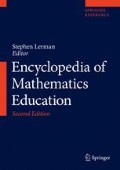
- Eva Jablonka 2
830 Accesses
8 Citations
- Logical thinking
- Argumentation
- Deductive reasoning
- Mathematical problem solving
- Mathematical literacy
- Critical judgment
- Goals of mathematics education
This is a preview of subscription content, log in via an institution to check access.
Access this chapter
- Available as PDF
- Read on any device
- Instant download
- Own it forever
- Available as EPUB and PDF
- Durable hardcover edition
- Dispatched in 3 to 5 business days
- Free shipping worldwide - see info
Tax calculation will be finalised at checkout
Purchases are for personal use only
Institutional subscriptions
Appelbaum P, Davila E (2009) Math education and social justice: gatekeepers, politics and teacher agency. In: Ernest P, Greer B, Sriraman B (eds) Critical issues in mathematics education. Information Age, Charlotte, pp 375–394
Google Scholar
Applebaum M, Leikin R (2007) Looking back at the beginning: critical thinking in solving unrealistic problems. Mont Math Enthus 4(2):258–265
Bacon F (1605) Of the proficience and advancement of learning, divine and human. Second Book (transcribed from the 1893 Cassell & Company edition by David Price. Available at: http://www.gutenberg.org/dirs/etext04/adlr10h.htm
Common Core State Standards Initiative (2010) Mathematics standards. http://www.corestandards.org/Math . Accessed 20 July 2013
Ernest P (2010) The scope and limits of critical mathematics education. In: Alrø H, Ravn O, Valero P (eds) Critical mathematics education: past, present and future. Sense Publishers, Rotterdam, pp 65–87
Fawcett HP (1938) The nature of proof. Bureau of Publications, Columbia/New York City. University (Re-printed by the National Council of Teachers of Mathematics in 1995)
Fenner P (1994) Spiritual inquiry in Buddhism. ReVision 17(2):13–24
Fish M, Persaud A (2012) (Re)presenting critical mathematical thinking through sociopolitical narratives as mathematics texts. In: Hickman H, Porfilio BJ (eds) The new politics of the textbook. Sense Publishers, Rotterdam, pp 89–110
Chapter Google Scholar
Garfield JL (1990) Epoche and śūnyatā: skepticism east and west. Philos East West 40(3):285–307
Article Google Scholar
Jablonka E (1997) What makes a model effective and useful (or not)? In: Blum W, Huntley I, Houston SK, Neill N (eds) Teaching and learning mathematical modelling: innovation, investigation and applications. Albion Publishing, Chichester, pp 39–50
Keitel C, Kotzmann E, Skovsmose O (1993) Beyond the tunnel vision: analyzing the relationship between mathematics, society and technology. In: Keitel C, Ruthven K (eds) Learning from computers: mathematics education and technology. Springer, New York, pp 243–279
Legrand M (2001) Scientific debate in mathematics courses. In: Holton D (ed) The teaching and learning of mathematics at university level: an ICMI study. Kluwer, Dordrect, pp 127–137
National Council of Teachers of Mathematics (NCTM) (1989) Curriculum and evaluation standards for school mathematics. National Council of Teachers of Mathematics (NCTM), Reston
O’Daffer PG, Thomquist B (1993) Critical thinking, mathematical reasoning, and proof. In: Wilson PS (ed) Research ideas for the classroom: high school mathematics. MacMillan/National Council of Teachers of Mathematics, New York, pp 31–40
Paul R, Elder L (2001) The miniature guide to critical thinking concepts and tools. Foundation for Critical Thinking Press, Dillon Beach
Pimm D (1990) Mathematical versus political awareness: some political dangers inherent in the teaching of mathematics. In: Noss R, Brown A, Dowling P, Drake P, Harris M, Hoyles C et al (eds) Political dimensions of mathematics education: action and critique. Institute of Education, University of London, London
Skovsmose O (1989) Models and reflective knowledge. Zentralblatt für Didaktik der Mathematik 89(1):3–8
Stallman J (2003) John Dewey’s new humanism and liberal education for the 21st century. Educ Cult 20(2):18–22
Steiner H-G (1988) Theory of mathematics education and implications for scholarship. In: Steiner H-G, Vermandel A (eds) Foundations and methodology of the discipline mathematics education, didactics of mathematics. In: Proceedings of the second tme conference, Bielefeld-Antwerpen, pp 5–20
Straehler-Pohl H, Bohlmann N, Pais A (eds) (2017) The disorder of mathematics education: challenging the socio-political dimensions of research. Springer, Berlin
Walkerdine V (1988) The mastery of reason: cognitive development and the production of rationality. Routledge, London
Walshaw M (2003) Democratic education under scrutiny: connections between mathematics education and feminist political discourses. Philos Math Educ J 17. http://people.exeter.ac.uk/PErnest/pome17/contents.htm
Download references
Author information
Authors and affiliations.
Department of Education and Psychology, Freie Universität Berlin, Berlin, Germany
Eva Jablonka
You can also search for this author in PubMed Google Scholar
Corresponding author
Correspondence to Eva Jablonka .
Editor information
Editors and affiliations.
Department of Education, Centre for Mathematics Education, London South Bank University, London, UK
Stephen Lerman
Section Editor information
Department of Mathematical Sciences, The University of Montana, Missoula, MT, USA
Bharath Sriraman
Rights and permissions
Reprints and permissions
Copyright information
© 2020 Springer Nature Switzerland AG
About this entry
Cite this entry.
Jablonka, E. (2020). Critical Thinking in Mathematics Education. In: Lerman, S. (eds) Encyclopedia of Mathematics Education. Springer, Cham. https://doi.org/10.1007/978-3-030-15789-0_35
Download citation
DOI : https://doi.org/10.1007/978-3-030-15789-0_35
Published : 23 February 2020
Publisher Name : Springer, Cham
Print ISBN : 978-3-030-15788-3
Online ISBN : 978-3-030-15789-0
eBook Packages : Education Reference Module Humanities and Social Sciences Reference Module Education
Share this entry
Anyone you share the following link with will be able to read this content:
Sorry, a shareable link is not currently available for this article.
Provided by the Springer Nature SharedIt content-sharing initiative
- Publish with us
Policies and ethics
- Find a journal
- Track your research
JavaScript seems to be disabled in your browser. For the best experience on our site, be sure to turn on Javascript in your browser.
- Order Tracking
- Create an Account

200+ Award-Winning Educational Textbooks, Activity Books, & Printable eBooks!
- Compare Products
Reading, Writing, Math, Science, Social Studies
- Search by Book Series
- Algebra I & II Gr. 7-12+
- Algebra Magic Tricks Gr. 2-12+
- Algebra Word Problems Gr. 7-12+
- Balance Benders Gr. 2-12+
- Balance Math & More! Gr. 2-12+
- Basics of Critical Thinking Gr. 4-9
- Brain Stretchers Gr. 5-12+
- Building Thinking Skills Gr. Toddler-12+
- Building Writing Skills Gr. 3-7
- Bundles - Critical Thinking Gr. PreK-9
- Bundles - Language Arts Gr. K-8
- Bundles - Mathematics Gr. PreK-9
- Bundles - Multi-Subject Curriculum Gr. Toddler-12+
- Bundles - Test Prep Gr. Toddler-12+
- Can You Find Me? Gr. PreK-1
- Complete the Picture Math Gr. 1-3
- Cornell Critical Thinking Tests Gr. 5-12+
- Cranium Crackers Gr. 3-12+
- Creative Problem Solving Gr. PreK-2
- Critical Thinking Activities to Improve Writing Gr. 4-12+
- Critical Thinking Coloring Gr. PreK-2
- Critical Thinking Detective Gr. 3-12+
- Critical Thinking Tests Gr. PreK-6
- Critical Thinking for Reading Comprehension Gr. 1-5
- Critical Thinking in United States History Gr. 6-12+
- CrossNumber Math Puzzles Gr. 4-10
- Crypt-O-Words Gr. 2-7
- Crypto Mind Benders Gr. 3-12+
- Daily Mind Builders Gr. 5-12+
- Dare to Compare Math Gr. 2-7
- Developing Critical Thinking through Science Gr. 1-8
- Dr. DooRiddles Gr. PreK-12+
- Dr. Funster's Gr. 2-12+
- Editor in Chief Gr. 2-12+
- Fun-Time Phonics! Gr. PreK-2
- Half 'n Half Animals Gr. K-4
- Hands-On Thinking Skills Gr. K-1
- Inference Jones Gr. 1-6
- James Madison Gr. 8-12+
- Jumbles Gr. 3-5
- Language Mechanic Gr. 4-7
- Language Smarts Gr. 1-4
- Mastering Logic & Math Problem Solving Gr. 6-9
- Math Analogies Gr. K-9
- Math Detective Gr. 3-8
- Math Games Gr. 3-8
- Math Mind Benders Gr. 5-12+
- Math Ties Gr. 4-8
- Math Word Problems Gr. 4-10
- Mathematical Reasoning Gr. Toddler-11
- Middle School Science Gr. 6-8
- Mind Benders Gr. PreK-12+
- Mind Building Math Gr. K-1
- Mind Building Reading Gr. K-1
- Novel Thinking Gr. 3-6
- OLSAT® Test Prep Gr. PreK-K
- Organizing Thinking Gr. 2-8
- Pattern Explorer Gr. 3-9
- Practical Critical Thinking Gr. 9-12+
- Punctuation Puzzler Gr. 3-8
- Reading Detective Gr. 3-12+
- Red Herring Mysteries Gr. 4-12+
- Red Herrings Science Mysteries Gr. 4-9
- Science Detective Gr. 3-6
- Science Mind Benders Gr. PreK-3
- Science Vocabulary Crossword Puzzles Gr. 4-6
- Sciencewise Gr. 4-12+
- Scratch Your Brain Gr. 2-12+
- Sentence Diagramming Gr. 3-12+
- Smarty Pants Puzzles Gr. 3-12+
- Snailopolis Gr. K-4
- Something's Fishy at Lake Iwannafisha Gr. 5-9
- Teaching Technology Gr. 3-12+
- Tell Me a Story Gr. PreK-1
- Think Analogies Gr. 3-12+
- Think and Write Gr. 3-8
- Think-A-Grams Gr. 4-12+
- Thinking About Time Gr. 3-6
- Thinking Connections Gr. 4-12+
- Thinking Directionally Gr. 2-6
- Thinking Skills & Key Concepts Gr. PreK-2
- Thinking Skills for Tests Gr. PreK-5
- U.S. History Detective Gr. 8-12+
- Understanding Fractions Gr. 2-6
- Visual Perceptual Skill Building Gr. PreK-3
- Vocabulary Riddles Gr. 4-8
- Vocabulary Smarts Gr. 2-5
- Vocabulary Virtuoso Gr. 2-12+
- What Would You Do? Gr. 2-12+
- Who Is This Kid? Colleges Want to Know! Gr. 9-12+
- Word Explorer Gr. 6-8
- Word Roots Gr. 3-12+
- World History Detective Gr. 6-12+
- Writing Detective Gr. 3-6
- You Decide! Gr. 6-12+

Mathematical Reasoning™ Grades 2-4 Supplement
Lower elementary mathematics to non-routine problems.
Grades: 2-4
Mathematics

- Multiple Award Winner
- Paperback Book - $29.99
- eBook - $29.99
Description and Features
This 325-page book develops investigative, analytical, and explanatory skills as well as a variety of quantitative and spatial relationships that are an essential part of the foundation of mathematics. Students who successfully complete this book will see gains in vocabulary development, observational skills, and the ability to process mathematical concepts on a much higher level. The activities are arranged in six sections which address six major strands in the elementary mathematics curriculum. Number and Numeration Discussion and analysis of counting, comparison, and numeration. Geometry Description, classification of shapes, composition of figures, and elementary spatial sense. Operations Builds on number and numeration using conceptual development of addition, multiplication, and subtraction. Applies these operations in problem solving. Measurement Integrates number and geometry concepts using length and area. Relations Uses order, number patterns, and functions to explore number relations. Tables and Graphs Involves organizing, displaying, and using data in a variety of formats.
Product Details
General license - download.
SOFTWARE LICENSE AGREEMENT
IMPORTANT-READ CAREFULLY
This is a legal agreement between you (a single entity, company, or educational institution) and The Critical Thinking Co.™ for the software accompanying this agreement, which includes computer Software and associated Documentation. By installing this Software on a computer, you agree to be bound by the terms of this agreement. If you do not agree to the terms of this agreement, promptly erase all copies of the software in your possession and return any Software packaging associated with this order within sixty (60) days of purchase to the place from which you obtained it for a full refund.
The Critical Thinking Co.™ hereby grants to you a non-exclusive license to use the software product identified above (the "Software") and the accompanying printed materials and User Manual (the "Documentation") on the terms set forth below.
1. GRANT OF LICENSE. The Critical Thinking Co.™ grants you the right to install and use this Software Product, provided that this software will be installed only in the quantity and for the computer system(s) indicated at the time of your order for the Software.
2. COPYRIGHT. The Software Product and Documentation are protected by copyright laws and international copyright treaties as well as other intellectual property laws and treaties. Therefore, you must treat the Software Product like any other copyrighted material. You may not remove, modify, or alter any of The Critical Thinking Co.'s™ copyright or trademark notices from any part originally contained in or otherwise created by the Software Product, including any notices contained in the Documentation.
3. RESTRICTIONS. You may not modify, translate, reverse engineer, decompile, disassemble, or create derivative works based on the Software, or any portion thereof. The Software Product is licensed as a single product. This Software Product can be installed on a computer as a whole and shall not be separated in parts or disassembled to parts or pieces. You may not rent, lease, or lend the Software or Documentation to any other party without the written permission of The Critical Thinking Co.™. The License is in effect until terminated. The License will terminate automatically if you fail to comply with the limitations described herein. On termination, you must destroy all copies of the Software and Documentation.
4. WARRANTIES. The Critical Thinking Co.™ expressly disclaims any warranty for the Software Product. The Software and Documentation is provided "as is" without warranty of any kind, either expressed or implied, including, without limitation, the implied warranties or merchantability, fitness for a particular purpose, or non-infringement. The entire risk arising out of use or performance of the Software remains with you. If media within this package is defective, remove the software application from your device(s) and return any software packaging associated with this order to The Critical Thinking Co.™ within 60 days of the date of purchase, and they will replace it at no charge.
5. NO LIABILITY FOR CONSEQUENTIAL DAMAGES. In no event shall The Critical Thinking Co.™ or its suppliers be liable for any damages whatsoever (including, without limitation, damages for loss of business profits, business interruption, loss of business information, or any other pecuniary loss) arising out of the use of or inability to use this Software Product, even if The Critical Thinking Co.™ has been advised of the possibility of such damages. Because some states/jurisdictions do not allow the exclusion or limitation of liability for consequential or incidental damages, the above limitation may not apply to you.
6. MISCELLANEOUS. This Agreement represents the complete agreement concerning this license between the parties and supersedes all prior agreements and representations between them. This Agreement may be amended only in writing executed by both parties. The acceptance of any purchase order placed by you is expressly made conditional on your assent to the terms set forth herein, and not those contained within your purchase order. If any provision of this Agreement is held to be unenforceable for any reason, such provision shall be reformed only to the extend necessary to make it enforceable and the remainder of this Agreement shall nonetheless remain in full force and effect. If you acquired this product in the United States, the laws of the State of California govern this Agreement. If this product was acquired outside the United States, then local laws may apply. Should you have any questions concerning this Agreement, or if you desire to contact The Critical Thinking Co.™ for any reason, please write to The Critical Thinking Co.™, PO Box 1610, Seaside, CA 93950-1610, USA; send a fax to 831-393-3277; send email to [email protected]; call 800-458-4849; or refer to The Critical Thinking Co.™'s Website at http://www.criticalthinking.com/ .
Practical Homeschooling Magazine - Reader Awards, 2014 - Honorable Mention, Elementary Math

Test preparation available for the following:
Mathematical Reasoning ™ prepares students to achieve top scores on assessment tests, including Otis-Lennon School Ability Test® (OLSAT®) Wechsler Intelligence Scale for Children® (WISC®) Wechsler Preschool and Primary Scale of Intelligence™ (WPPSI™) Cognitive Abilities Test™ (CogAT®) Gifted and Talented Education (GATE) / Talented and Gifted (TAG) Maryland School Performance Assessment Program (MSPAP) WA Measurements of Student Progress (MSP) Massachusetts Comprehensive Assessment System (MCAS) Connecticut Mastery Test (CTPIII) Florida Comprehensive Assessment Test (FCAT) Iowa Tests of Basic Skills® (ITBS®) Primary Test of Cognitive Skills™ (PTCS) and many more!
Bundle Content
Customer reviews, other products in the same series view product series page.
- Add to Cart Add to Cart Remove This Item
- Special of the Month
- Sign Up for our Best Offers
- Bundles = Greatest Savings!
- Sign Up for Free Puzzles
- Sign Up for Free Activities
- Toddler (Ages 0-3)
- PreK (Ages 3-5)
- Kindergarten (Ages 5-6)
- 1st Grade (Ages 6-7)
- 2nd Grade (Ages 7-8)
- 3rd Grade (Ages 8-9)
- 4th Grade (Ages 9-10)
- 5th Grade (Ages 10-11)
- 6th Grade (Ages 11-12)
- 7th Grade (Ages 12-13)
- 8th Grade (Ages 13-14)
- 9th Grade (Ages 14-15)
- 10th Grade (Ages 15-16)
- 11th Grade (Ages 16-17)
- 12th Grade (Ages 17-18)
- 12th+ Grade (Ages 18+)
- Test Prep Directory
- Test Prep Bundles
- Test Prep Guides
- Preschool Academics
- Store Locator
- Submit Feedback/Request
- Sales Alerts Sign-Up
- Technical Support
- Mission & History
- Articles & Advice
- Testimonials
- Our Guarantee
- New Products
- Free Activities
- Libros en Español

Little Learner and Mom
Homeschooling and Loving It!
The Critical Thinking Co: Mathematical Reasoning E and Language Smarts Level E!
Complimentary Product Received!
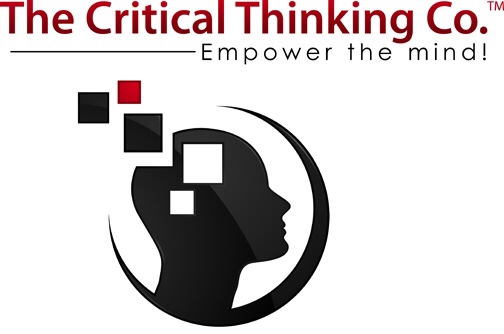
We have been long-term users and reviewers of The Critical Thinking Co. My son’s first math book was Mathematical Reasoning Beginning 1 and his first logic book was Building Thinking Skills Beginning 1 we developed a love for this company’s products over the years. I was really excited when granted an opportunity to review the Mathematical Reasoning Level E and Language Smarts Level E .
About Critical Thinking Co.
Just to give you a little background on The Critical Thinking Co. it was established in 1958 and its mission has been to supply learning resources that are fun and have students work to their highest abilities. All of their resources integrate logic and critical thinking skills.
“If we teach children everything we know, their knowledge is limited to ours. If we teach children to think, their knowledge is limitless.” – Michael Baker, President
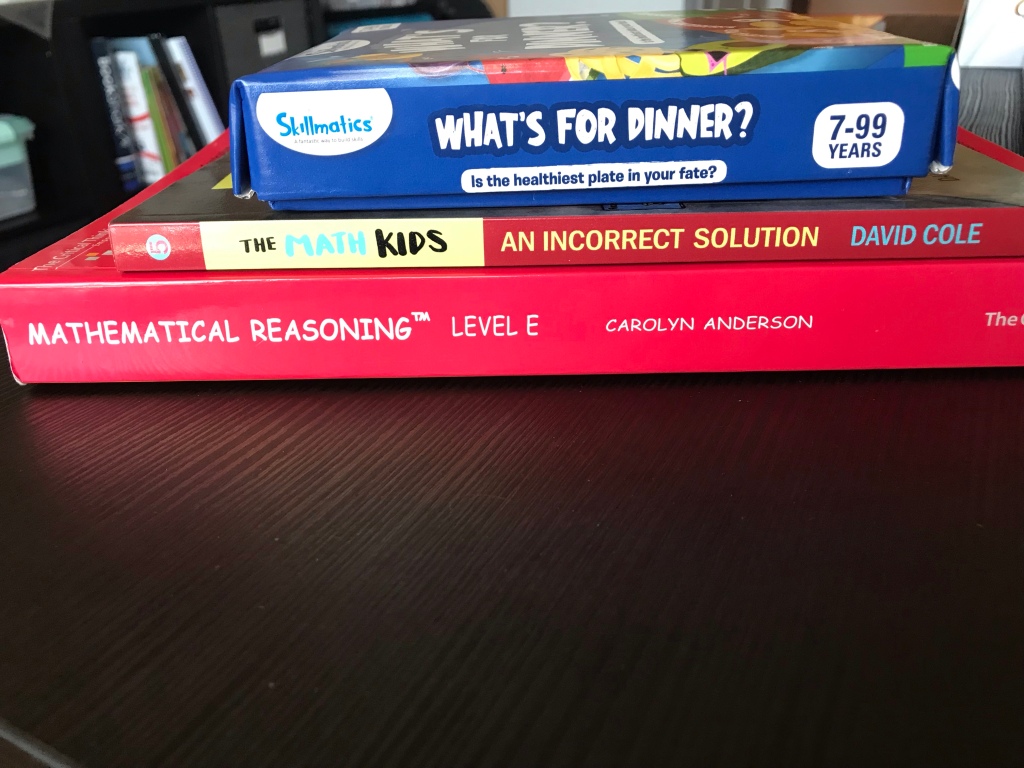
Mathematical Reasoning Level E
Mathematical Reasoning Level E arrived just in time when we were doing a complete overhaul of our math curriculum choices. My son was not struggling with math concepts he was disliking his current math curriculum layout and busywork approach. I looked over the Mathematical Reasoning Level E with him and the first thing he said was “It has color!”. Then he noticed how the book didn’t look like your typical math text. Mathematical Reasoning Level E uses vibrant colors, and festive illustrations to teach math. There isn’t a lot of wording it’s straight to the point then kids practice the skills. The text is 384 pages of slowly spiraled concepts that include easy-to-follow explanations, charts, and examples.
“This book emphasizes problem-solving and computation to build for success in higher-level math and math assessments.” The Critical Thinking Co.
Each page is an adventure in learning 4th-grade math. Mathematical Reasoning Level E is a comprehensive full math curriculum that can be used as a supplement or a full curriculum. Mathematical Reasoning Level E teaches all the concepts for 4th-grade math and also includes concepts that aren’t presented until 5th-grade math. What I like about Mathematical Reasoning Level E is that it provides my son with just the right amount of rigor while promoting mathematical reasoning.
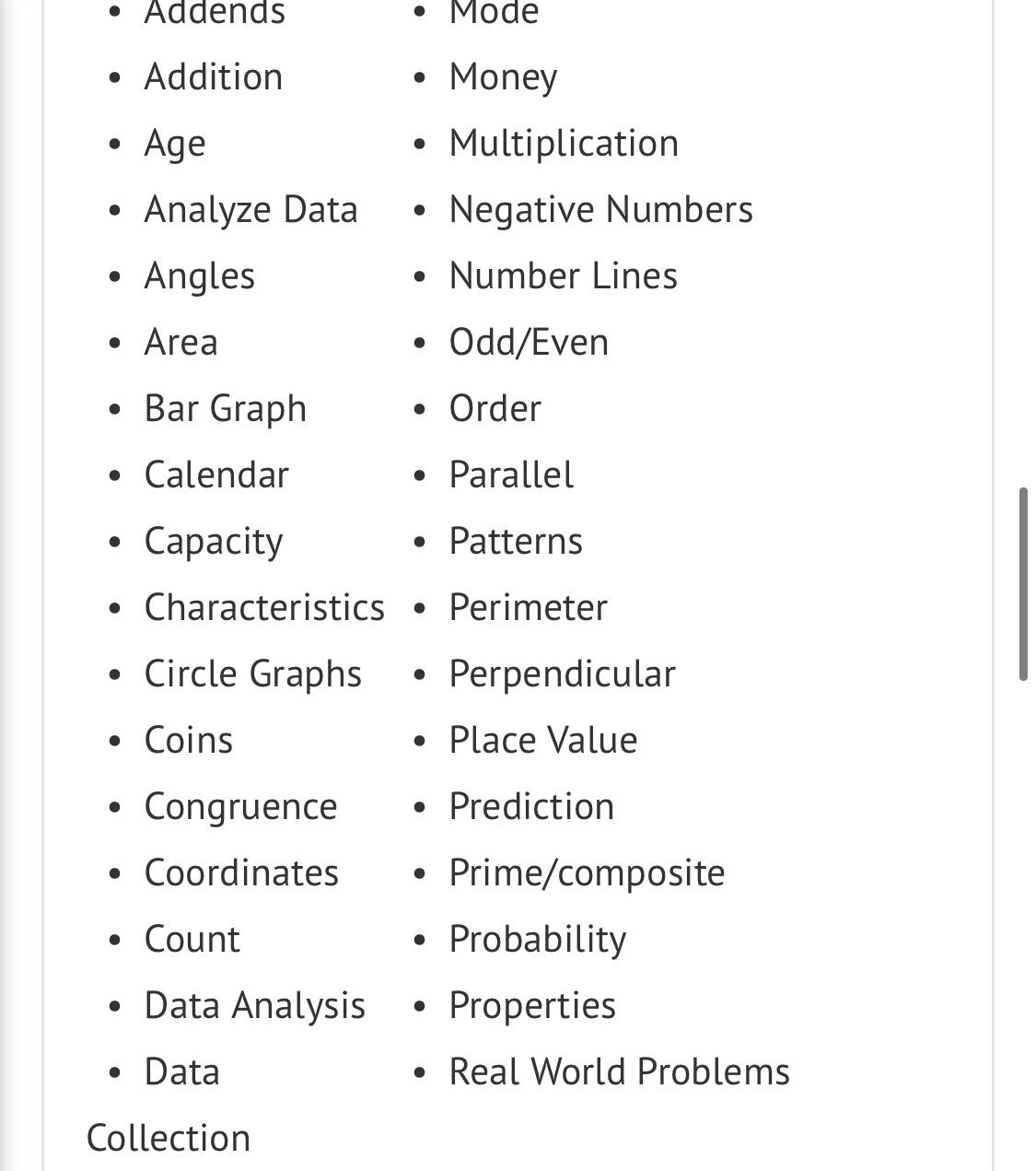
Mathematical Reasoning Level E is available on hardcover or ebook. The Mathematical Reasoning series has books for Toddler- 6th grade. Keep in mind from my experience with the grade-level books they will cover those grade-level concepts as well as introduce the next grade. Mathematical Reasoning Level E is a full curriculum this isn’t a workbook. We are using the book as a full curriculum alongside our RightStart Level E this is a perfect pairing. We love Mathematical Reasoning Level E so much that I went ahead and picked up Mathematical Reasoning Level F .
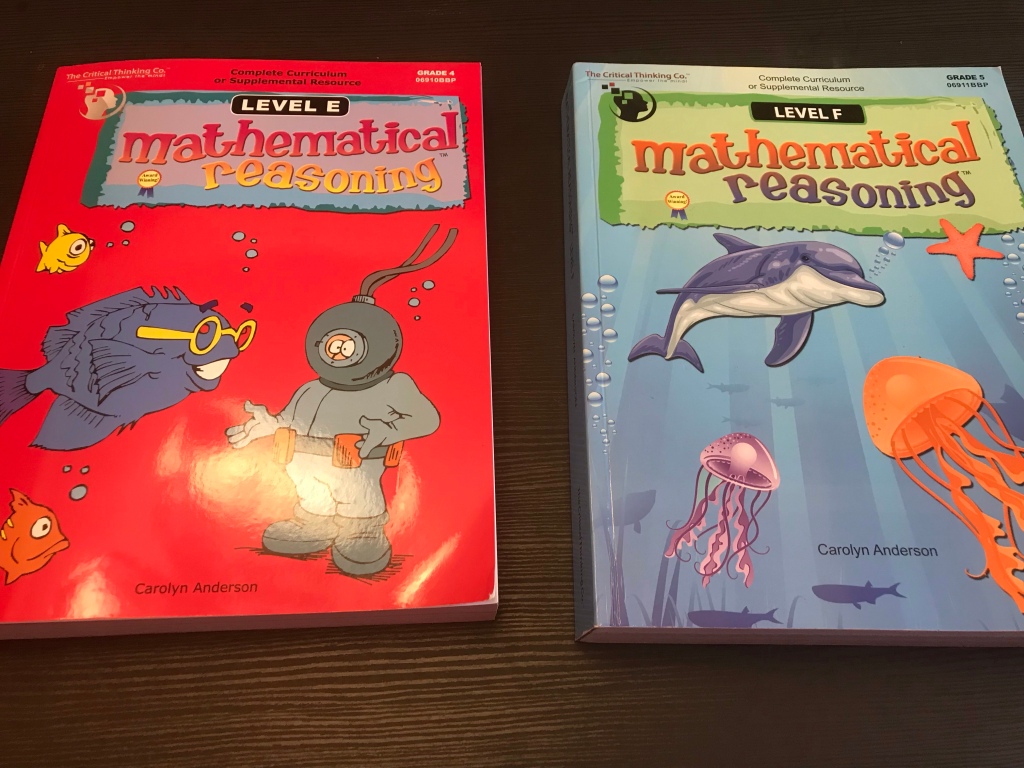
Language Smarts Level E
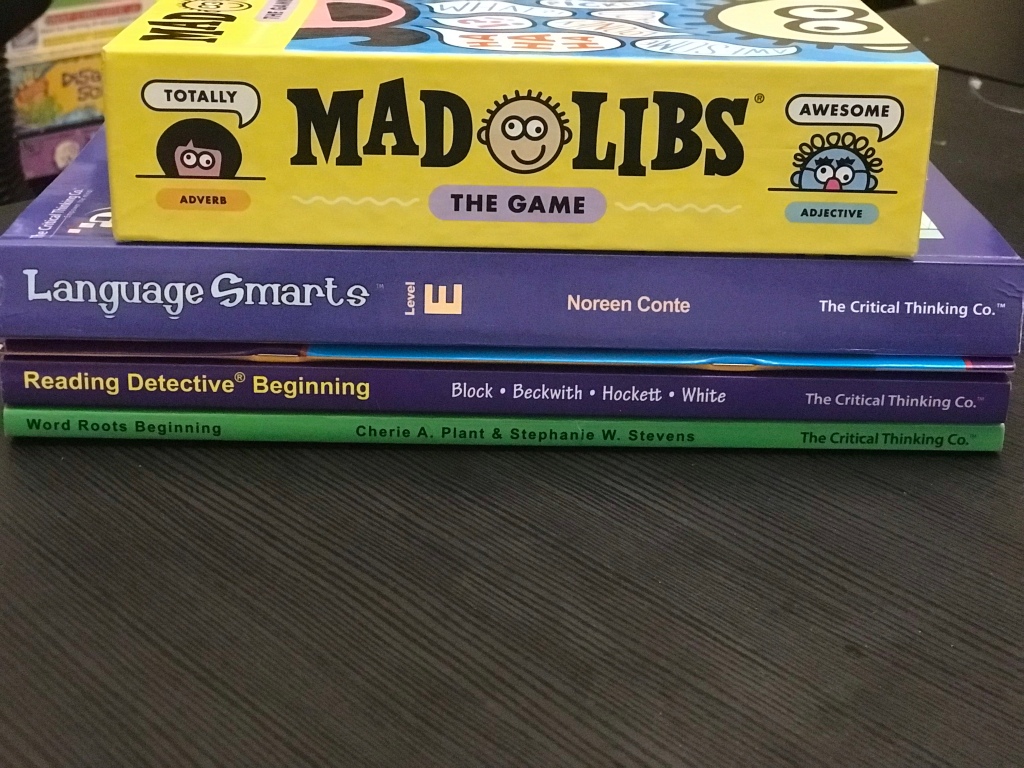
I was pleasantly surprised by the Language Smarts Level E , I had no idea this textbook was so comprehensive. We have been using the Word Roots Beginning and the Reading Detective Grades 3- 4 this year we love these 2 texts and now we are enjoying Language Smarts Level E . The Language Smarts Level E is a fantastic language arts textbook it provides 400 pages of rigorous, vibrant, vocabulary, and critical thinking skills. Students will also learn skills meant for 5th grade which means you can stretch this book into your student’s 5th-grade year. Language Smarts Level E can be used as a supplement or a full curriculum.
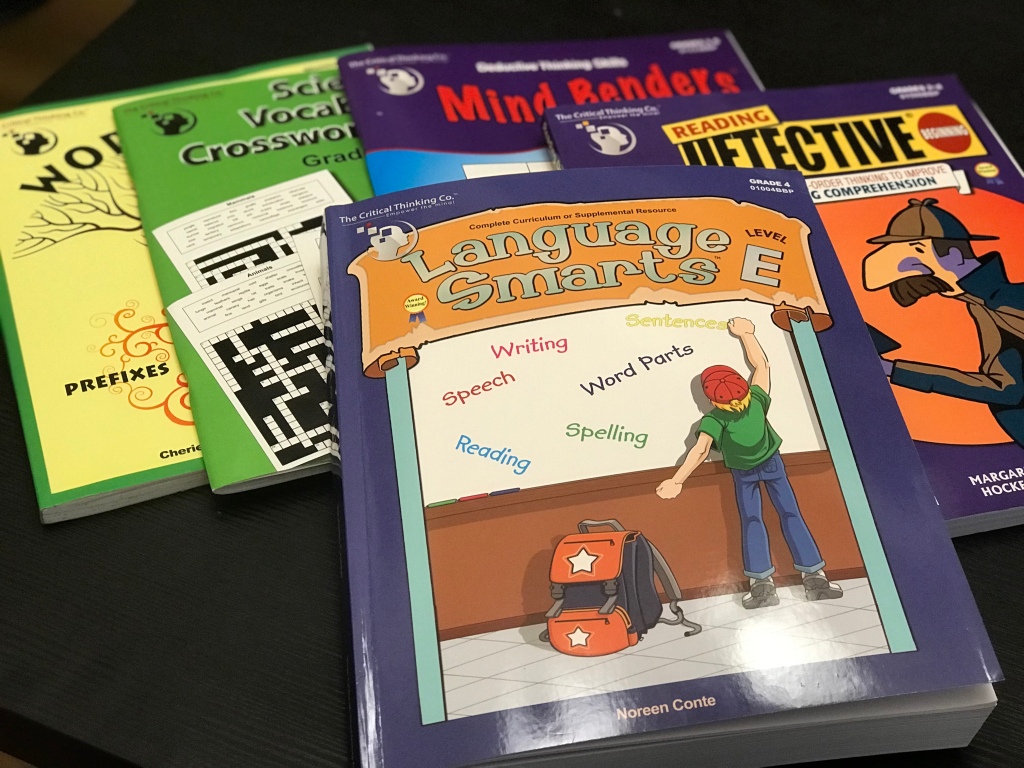
The textbook also has easy explanations and provides students a fair amount of practice. What I really enjoy is the simplicity of the lessons, my son didn’t feel overwhelmed and he could do lessons independently.
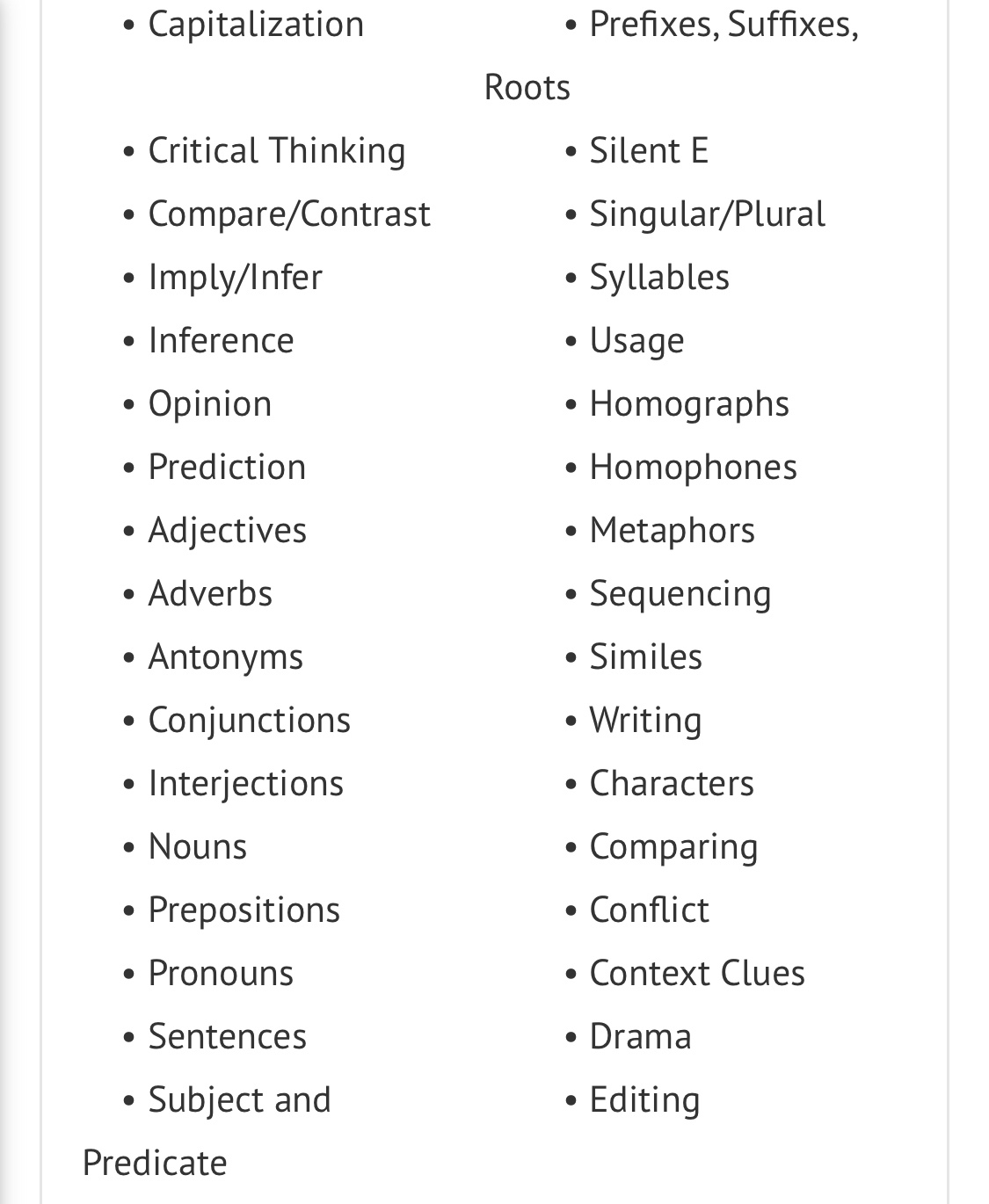
I highly recommend The Critical Thinking Co. Mathematical Reasoning Level E and Language Smarts Level E comprehensive full curriculum textbooks. They are both available as physical and ebook. I also highly recommend any resources from The Critical Thinking Co. This is one company that will be a permanent fixture in our homeschool. The website provides excellent sample pages and details of all of their books. You will find your student loving these vibrant funny pages that engage them to think critically and logically.
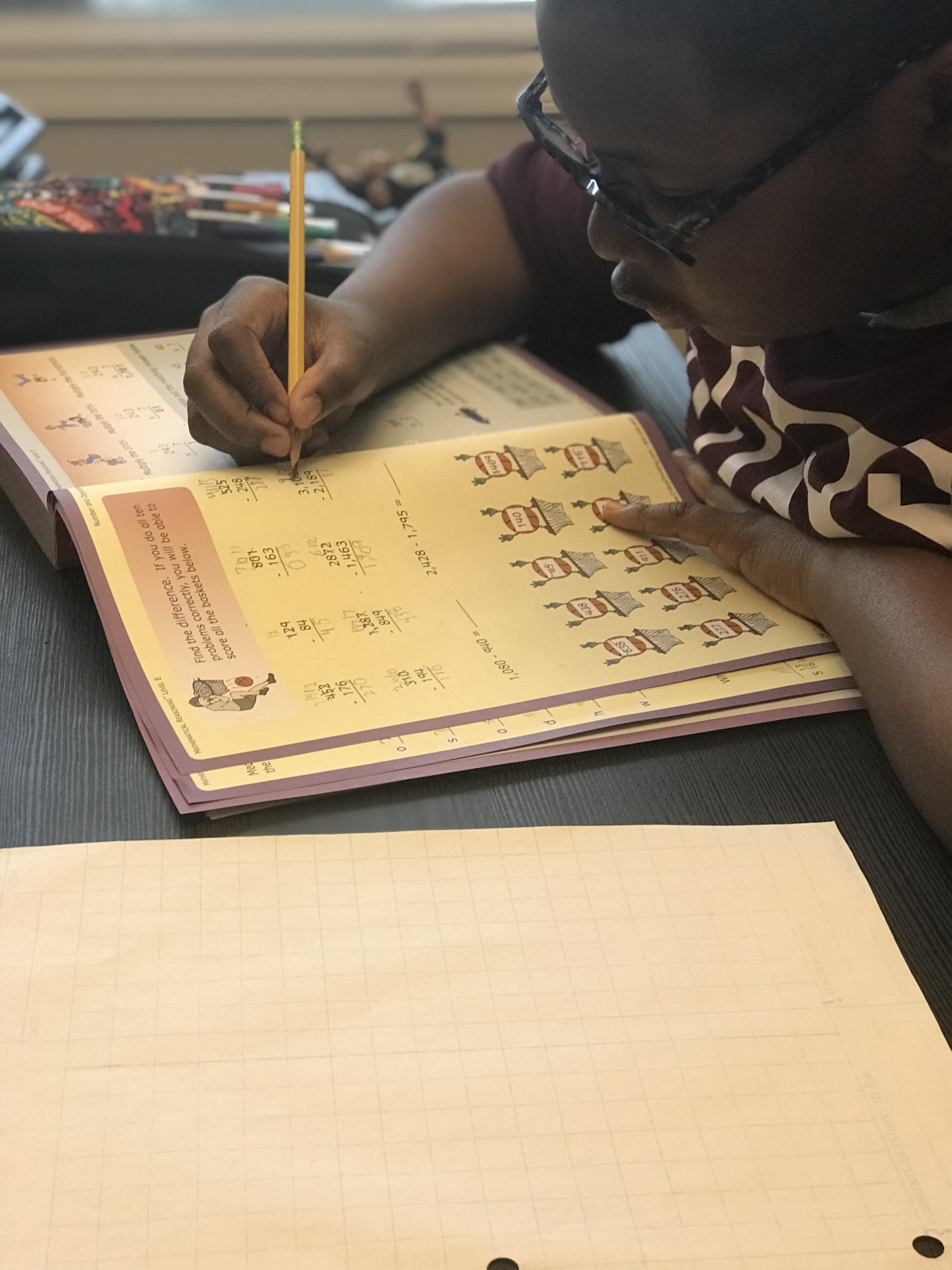
The Critical Thinking Co. Social Media
Website | Instagram | Twitter | Pinterest | Facebook
Share this:
Published by Little Learner and Mom
De-Shaun Jordan is the founder of Little Learners Mom Consulting and Little Learner and Mom Homeschool Blog. For the last 8 years, she has exclusively homeschooled her son. DeShaun holds a Bachelor of Arts in Healthcare Management and is Montessori Certified. She is married to her high school sweetheart and mother to their 10-year-old son. DeShaun enjoys being a mom, cooking, organizing, and helping others looking to homeschool or in need of guidance with education intervention. View all posts by Little Learner and Mom
1 thought on “The Critical Thinking Co: Mathematical Reasoning E and Language Smarts Level E!”
- Pingback: The Critical Thinking Co. Building Thinking Skills Level 2 – Little Learner and Mom
Leave a comment Cancel reply

- Already have a WordPress.com account? Log in now.
- Subscribe Subscribed
- Copy shortlink
- Report this content
- View post in Reader
- Manage subscriptions
- Collapse this bar
JavaScript seems to be disabled in your browser. For the best experience on our site, be sure to turn on Javascript in your browser.
- Order Tracking
- Create an Account

200+ Award-Winning Educational Textbooks, Activity Books, & Printable eBooks!
- Compare Products
Reading, Writing, Math, Science, Social Studies
- Search by Book Series
- Algebra I & II Gr. 7-12+
- Algebra Magic Tricks Gr. 2-12+
- Algebra Word Problems Gr. 7-12+
- Alphabet Song Game Gr. Toddler-1
- Balance Benders Gr. 2-12+
- Balance Math & More! Gr. 2-12+
- Basics of Critical Thinking Gr. 4-9
- Bloom's Taxonomy Question Writer Gr. 3-12+
- Brain Stretchers Gr. 5-12+
- Building Thinking Skills Gr. Toddler-12+
- Building Writing Skills Gr. 3-7
- Bundles (Books) Gr. Toddler-12+
- Bundles (Software) Gr. 2-12+
- Can You Find Me? Gr. PreK-1
- Complete the Picture Math Gr. 1-3
- Cornell Critical Thinking Tests Gr. 5-12+
- Cranium Crackers Gr. 3-12+
- Creative Problem Solving Gr. PreK-2
- Critical Thinking Activities to Improve Writing Gr. 4-12+
- Critical Thinking Coloring Gr. PreK-2
- Critical Thinking Detective Gr. 3-12+
- Critical Thinking for Reading Comprehension Gr. 1-5
- Critical Thinking in United States History Gr. 6-12+
- CrossNumber Math Puzzles Gr. 4-10
- Crypt-O-Words Gr. 2-7
- Crypto Mind Benders Gr. 3-12+
- Daily Mind Builders Gr. 5-12+
- Dare to Compare Math Gr. 2-7
- Developing Critical Thinking through Science Gr. 1-8
- Dr. DooRiddles Gr. PreK-12+
- Dr. Funster's Gr. 2-12+
- Editor in Chief Gr. 2-12+
- Fun-Time Phonics! Gr. PreK-2
- Half 'n Half Animals Gr. K-4
- Hands-On Thinking Skills Gr. K-1
- Inference Jones Gr. 1-6
- James Madison Gr. 8-12+
- Jumbles Gr. 3-5
- Language Mechanic Gr. 4-7
- Language Smarts Gr. 1-4
- Letter Sounds Song and Game Gr. PreK-1
- Mastering Logic & Math Problem Solving Gr. 6-9
- Math Analogies Gr. K-9
- Math Detective Gr. 3-8
- Math Games Gr. 3-8
- Math Mind Benders Gr. 5-12+
- Math Ties Gr. 4-8
- Math Word Problems Gr. 4-10
- Mathematical Reasoning Gr. Toddler-11
- Memory Challenge! Gr. K-12+
- Middle School Science Gr. 6-8
- Mind Benders Gr. PreK-12+
- Mind Building Math Gr. K-1
- Mind Building Reading Gr. K-1
- Novel Thinking Gr. 3-6
- OLSAT® Test Prep Gr. PreK-K
- Organizing Thinking Gr. 2-8
- Pattern Explorer Gr. 3-9
- Practical Critical Thinking Gr. 9-12+
- Punctuation Puzzler Gr. 3-8
- Reading Detective Gr. 3-12+
- Reading, Writing, and Arithmetic Before K Gr. Toddler-K
- Red Herring Mysteries Gr. 4-12+
- Red Herrings Science Mysteries Gr. 4-9
- Riddle Rabbit Gr. PreK-1
- Science Detective Gr. 3-6
- Science Mind Benders Gr. PreK-3
- Science Vocabulary Crossword Puzzles Gr. 4-6
- Sciencewise Gr. 4-12+
- Scratch Your Brain Gr. 2-12+
- Sentence Diagramming Gr. 3-12+
- Smart Abacus Gr. PreK-1
- Smarty Pants Puzzles Gr. 3-12+
- Snailopolis Gr. K-4
- Something's Fishy at Lake Iwannafisha Gr. 5-9
- Spider Island Gr. K-12+
- Teaching Technology Gr. 3-12+
- Tell Me a Story Gr. PreK-1
- Think Analogies Gr. 3-12+
- Think and Write Gr. 3-8
- Think-A-Grams Gr. 4-12+
- Thinking About Time Gr. 3-6
- Thinking Connections Gr. 4-12+
- Thinking Directionally Gr. 2-6
- Thinking Skills & Key Concepts Gr. PreK-2
- Thinking Skills for Tests Gr. PreK-5
- U.S. History Detective Gr. 8-12+
- Understanding Fractions Gr. 2-6
- Visual Perceptual Skill Building Gr. PreK-3
- Vocabulary Riddles Gr. 4-8
- Vocabulary Smarts Gr. 2-5
- Vocabulary Virtuoso Gr. 2-12+
- Vowel Sounds Song and Game Gr. PreK-2
- What Would You Do? Gr. 2-12+
- Word Explorer Gr. 6-8
- Word Roots Gr. 3-12+
- World History Detective Gr. 6-12+
- Writing Detective Gr. 3-6
- You Decide! Gr. 6-12+

- Special of the month
- Sign Up for our Best Offers
- Bundles = Greatest Savings!
- Sign Up for Free Puzzles
- Toddler (Ages 0-3)
- PreK (Ages 3-5)
- Kindergarten (Ages 5-6)
- 1st Grade (Ages 6-7)
- 2nd Grade (Ages 7-8)
- 3rd Grade (Ages 8-9)
- 4th Grade (Ages 9-10)
- 5th Grade (Ages 10-11)
- 6th Grade (Ages 11-12)
- 7th Grade (Ages 12-13)
- 8th Grade (Ages 13-14)
- 9th Grade (Ages 14-15)
- 10th Grade (Ages 15-16)
- 11th Grade (Ages 16-17)
- 12th Grade (Ages 17-18)
- 12th+ Grade (Ages 18+)
- Test Prep Directory
- Test Prep Bundles
- Test Prep Guides
- Preschool Academics
- Store Locator
- Submit Feedback/Request
- Sales Alerts Sign-Up
- Technical Support
- Mission & History
- Articles & Advice
- Testimonials
- Our Guarantee
- New Products
- Free Activities
- Libros en Español
Customers love our products...
Tell us your story ».
"My children love Balance Benders™; in fact, I would not be exaggerating if I said they were addicted to them. I sincerely thank you for a product that makes what can be extremely difficult skills to master an absolute blast for my children."
"The wealth of game-like activities and colorful illustrations in Fun-Time Phonics!™ make it feel like play rather than work, allowing kids to enjoy themselves while acquiring the skills and confidence that lead to fluency."
"Reading Detective® is the best reading comprehension teaching material I have found! I love that your material teaches the student HOW to comprehend, and how to look for the answers in the text. I love your evidence-seeking approach!"
"I love the Language Smarts™ curriculum. My son enjoys it very much and can follow the simple instructions with ease. Thanks to The Critical Thinking Co.™, my son scores high on his standardized and placement tests."
"U.S. History Detective® is fabulous. You have to do more than just figure out the correct answer -- you have to give the sentence number(s) that best supports your answer. I love that. You have to read the text and support your conclusions."
"The fun thing about Mathematical Reasoning™ is that every page is a little different. No rote facts or boredom here! Mix that in with a few game-like activities and lots of colors and pictures, and they had my kiddo hooked."
"We did an experiment to see if Building Thinking Skills® would help students perform better on standardized and state tests. The improvement was remarkable. Test scores went up even after the first few months!"
"Word Roots is everything I was searching for and more. It goes beyond spelling tests and teaches students to decipher words based upon prefixes, suffixes, and roots. The focus is on meaning, which in turn increases comprehension."
"You wouldn't think something so fun could have such a profound effect on your thought process! Mind Benders® sharpen organizational and informational processing skills as well as strengthen reading skills."

- Create a List
- Cathy Duffy Reviews Home >
- Homeschool Reviews Core Curricula >
- Math PreK-K >
Mathematical Reasoning
A combination of challenging content, very attractive layout, variety, significant incorporation of thinking skills, and relatively low cost merited the Mathematical Reasoning series a place among my 102 Top Picks.
This series should work very well for home educators since it works best when taught one-on-one or in small groups. The series begins at preschool level and continues through sixth grade.
While the worktexts were written to be used as either core texts or supplements, they are comprehensive enough to serve as your core texts. There are fewer problems to solve in these books than in other programs—fewer problems per page although the books are quite large. So you might supplement Mathematical Reasoning books with additional hands-on activities, games, or practice problems, and you might also use the Mathematical Reasoning Supplements I describe at the end of this review. The first three books include a suggestion that you check out the National Library of Virtual Manipulatives at http://nlvm.usu.edu/en/nav/vlibrary.html , a free website where students can work on math activities with simulated manipulatives. This site has activities up through high school level so you might also want to access it if you are using upper-level courses or any other math program for that matter.
The Mathematical Reasoning series uses a spiral approach, introducing a concept then revisiting it a number of times at intervals. Students who like variety should love this series since there are seldom two pages that look similar. Pages always have at least one illustration and are so colorful that there is little white space on a page.
As one would expect of anything from The Critical Thinking Co. (TCTC), this series emphasizes critical thinking in ways you seldom encounter in other math courses. It includes some grid-type logic puzzles (like those in the Mind Bender series from TCTC) as well as puzzles from Balance Benders and Cranium Crackers books from TCTC. Other puzzles of many types are incorporated into exercises to challenge thinking skills as well as to make it more fun.
The authors teach proper nomenclature from the beginning. For example, they use the term “line segment” rather than “line” and the term “numeral” rather than “number,” even in the preschool books.
Conceptual development is exceptionally strong since the program uses numerous ways of explaining and applying each concept. Concepts are often introduced with visual representations, sometimes representations of Base Ten Blocks or other manipulatives. You might actually use manipulatives if that is helpful for your child, but they are not required.
At the beginning of the book are very brief teaching instructions. Each lesson has directions and brief instruction on a new concept when needed. Parents and teachers might need to work with students with more explanation, examples, and practice on a new concept before expecting them to solve problems or complete activities. Even for lessons on concepts that students already understand, they might sometimes need assistance to know how to complete an unusual activity.
Answer keys are included at the back of each book from Level B (Grade 1) and up. You should not need them for the first three books.
Books are challenging and sometimes move into topics that are beyond what is typically taught at each level. Be cautious to select the correct level, and do not be concerned if your child needs to start at what appears to be a lower level than you would expect.
Beginning 1 (Age 3)
Beginning 1 introduces the numbers 1 through 5, both visually and with numerals. It even introduces the concepts of addition and subtraction (e.g., 2 owls + 2 owls shown with pictures) at the end of the book! Other topics are size comparisons (e.g., smaller and larger), shapes, colors, identifying similar objects, counting, one-to-one correspondence, patterns, order (first, second, …fifth), measuring inches, the number line, numeral recognition, beginning logic (via Mind Bender types of puzzles), and the characteristics of triangles, squares, and rectangles.
There is a great deal of repetition in this book, and many concepts are those that children will be exposed to in normal activities around the house, so you can skip this book without missing anything critical. All concepts also show up again in Beginning 2. Some concepts in this book will be beyond many three-year-old children.
Beginning 2 (Age 4)
Beginning 2 is similar in design to Beginning 1 , but it covers numbers 0 through 13 as well as the concepts covered in Beginning 1 . It starts with activities where students match numerals and groups of objects, so children should already be at least somewhat familiar with what the numbers 1 through 6 look like. Other concepts introduced in this book are the idea of zero, how to write numerals, working with a number line, visual estimation (i.e., which group appears to have more or fewer items), prepositional placement (e.g., how many dogs are in front of or beside the dog house?), dot-to-dot puzzles, right and left, and halves.
Level A (Kindergarten)
The Beginning books emphasize counting, while Level A really moves into addition and subtraction but with sums not higher than 8 and subtraction problems with minuends (the top number) no higher than 7. Other concepts taught are odd and even numbers, patterns, counting and writing numerals up to 20, identifying similar objects, order (first, second, etc.), geometric shapes, symmetry, attributes, equations for addition and subtraction, completing bar graphs, Mind Bender type logic problems, halves and quarters (only visual concepts), coins, and time telling.
Level B (Grade 1)
Level B introduces place value, expanded notation, counting by tens, coins, directions (including compass directions), measuring inches, the concept of measuring by other units, completing a "hundreds chart," visual analogies, transformations, bar graphs, lines of symmetry, fractions and their numerical expressions (1/2, 1/3, 1/4), thermometers, the calendar, and time telling. There are also puzzles such as dot-to-dots, Mind Bender grids, and other logic puzzles. Base Ten Blocks might be especially helpful with Level B since they are shown visually in many lessons.
Level C (Grade 2)
Level C teaches carrying and borrowing (regrouping) up through subtraction problems with two-digit subtrahends. It teaches multiplication via skip counting, arrays, and other visual methods while it also introduces multiplication equations. Division is briefly presented at the end of the book, but it is taught only as a function opposite to multiplication. Students start learning their multiplication facts this year but shouldn’t be expected to have mastered them. Among other concepts in this level are surveys, probability, graphs, estimation, measurement, place value, odd and even numbers, metric measurement, fraction concepts, money with coins and bills, polygons, vertices, rounding numbers, writing number words, placeholders in equations, and many word and logic problems. An illustrated glossary and answer key are at the back of the book.
Level D (Grade 3)
Level D continues with topics taught in Level C but with a heavy focus on multiplication and division up through the introduction of long division with single-digit divisors. It also teaches fraction algorithms including addition, subtraction, and multiplication of simple fractions; recognition of like and unlike denominators; and finding equivalent fractions. Among other topics new at this level are beginning work with decimals, congruent figures, using the (x,y) form to identify locations on a coordinate grid, units of measurement, rays, angles, endpoints, perimeter, area, weight, least common multiples, reflections, translations, and rotations. There are also two pages of “Time Trials” on multiplication facts.
Level E (Grade 4)
Students do lots of work with addition, subtraction, multiplication, and division in Level E . Multiplication and division are taken to higher levels including teaching about remainders in division. While decimals receive some attention, fractions are the main topic. Among other topics added this year are factors, prime and composite numbers, mean/median/mode, inequalities, negative numbers, order of operations, working with improper fractions, and the concept of functions.
Level F (Grade 5)
Fractions and decimals receive the most attention in Level F . Students continue to move to more challenging levels of study on concepts introduced in lower level books. New concepts are the use of a protractor, measurement of angles, elapsed time, computing a bank account balance, volume of three-dimensional objects, and geometric shapes such as hexagons and decagons.
Level G (Grade 6)
Level G reviews concepts and skills students should have previously mastered such as addition, subtraction, multiplication, division, fractions, and decimals. While review activities include basics such as how to do regrouping for subtraction, a set of practice problems for each concept is generally accompanied by a simple puzzle that can only be solved once all problems have been answered correctly. Students encounter more challenging work with fractions and decimals as well as number properties, order of operations, measurement, geometry, and algebra. It even introduces the concepts of slope and functions. However, even the two latter concepts are introduced in a way that makes them understandable for students at this level. Mathematical puzzles such as magic squares and logic puzzles are just a few of the many critical thinking type activities built into the course.
Mathematical Reasoning Supplements
Those who want more of a challenge for their students might want to use one of the Mathematical Reasoning Supplement books. Three are available, one for grades two through four, one for grades four through six, and one for grades seven through nine. Each book is topically arranged with lessons under headings such as Geometry, Measurement, Fractions, Patterns, and Graphing. Topics vary by level. Books are printed in black and white but they include many math illustrations such as geometric shapes and patterns. These books stretch students to apply their math skills in non-routine problems. Many of the problems have “puzzle-solving” appeal. Each book is self-contained with a complete solutions guide at the back. Student pages are reproducible for one family or class group.
Sample pages from each book as well as the table of contents may be viewed at the publisher's website.
Also see my review of Understanding Geometry , another book in this series.
Pricing Information
When comparison prices appear, please keep in mind that they are subject to change. Click on links where available to verify price accuracy.
The weight-loss action diary: A journal, workbook, and motivator for permanent slenderness
- $40.99 at Rainbowresource.com
- $40.99 at Christianbook.com
Mathematical Reasoning Level A - Bridging the Gap Between Computation and Math Reasoning (Grade K)
- $38.99 at Rainbowresource.com
- $38.99 at Christianbook.com
Mathematical Reasoning Beginning 2
- $36.99 at Rainbowresource.com
- $36.99 at Christianbook.com
Mathematical Reasoning Beginning 1 (PK)
- $34.99 at Christianbook.com
- $34.99 at Rainbowresource.com
Mathematical Reasoning Level C (Gr. 2)
- $42.99 at Christianbook.com
- $42.99 at Rainbowresource.com
Mathematical Reasoning Level D (Gr. 3)
Mathematical reasoning level e, grade 4, mathematical reasoning level f (gr. 5), mathematical reasoning supplement - grades 4-6.
- $29.99 at Christianbook.com
- $29.99 at Rainbowresource.com
Mathematical Reasoning Level G (Gr. 6)
Core curricula.
- Art & Music
- Bible & Religion
- Catholic Curricula
- Composition & Grammar
- Early Learning / Preschool
- Foreign Language
- Handwriting
- History & Geography
- Grade Level Packages & Courses
- Math Supplements
- Phonics & Reading
- Spelling & Vocabulary
- Unit Studies & All-In-One Programs
- Register | Log in
Publisher's Info
- The Critical Thinking Co.™
- (800) 458-4849
- https://www.criticalthinking.com/
Note: Publishers, authors, and service providers never pay to be reviewed. They do provide free review copies or online access to programs for review purposes.
Disclosure of Material Connection: Some of the links in the post above are "affiliate links." This means if you click on the link and purchase the item, I will receive an affiliate commission. Regardless, I only recommend products or services that I believe will add value to my readers. I am disclosing this in accordance with the Federal Trade Commission's 16 CFR, Part 255 "Guidelines Concerning the Use of Endorsements and Testimonials in Advertising."

- Welcome, Guest
- Ideas and issues Featured resources News Special Offers Home
- Working with TC²
Celebrating 25 years
Working with us, sessions and programs, ongoing support, lessons, units and courses, source materials, professional resources, sharing existing materials, commissioned resources, collaborative research.

Critical Thinking in Math: A Focus on Mathematical Reasoning Competencies

TC²’s approach to math embraces the idea that sustained quality mathematical thinking, or reasoning, is the key to the success of current and future generations of math students.
What Is Mathematical Reasoning?
A mathematical reasoning approach optimizes the learning opportunities for every student in the classroom. It empowers students with the capacity to independently detect the need for, and to use, a wide range of math reasoning abilities.
- a strong understanding of foundational math concepts and content, and
- the capacity to reason soundly about and with these concepts and content.
- deeply understand
- appropriately act on, and
- effectively communicate using those concepts.
What Are Mathematical Reasoning Competencies?
Eight key mathematical reasoning competencies underpin all math learning and are needed for student success in math. These are presented in A Math Pedagogy Designed to Empower Learners [PDF].
"To provide each and every student equitable opportunities to improve their learning success in math, students need to learn how to reason soundly in a variety of ways through the application of critical thinking. —Laura Gini Newman (2020) A Math Pedagogy Designed to Empower Learners
Math Resources Survey
Let us know how we can best support the implementation of a mathematical reasoning approach in your classroom(s) or school(s). Complete our short survey and receive 10% off our publications!
To learn more about critical thinking in math with TC² check out: Classroom Ready Materials Professional Learning Resources What Teachers Are Saying Professional Learning
Classroom Ready Materials
Online learning.
Describing Trends in Data: Which data set should be considered linear in the trends it presents? In this lesson, students learn how to use lines (curves) of best fit to help them effectively describe mathematical trends in data. Most suitable for grades 8–10.
Intermediate (7–9)
Grade 9 Student Lessons These lessons were developed in partnership with the Matawa Education and Care Centre.
What is the best way to represent information to help you make financial decisions: a table or a graph? [PDF] In this lesson, students compare different ways of organizing information to create a budget that will help them make the best financial decision.
Which best describes the trend in the data: a line of best fit or a curve of best fit? [PDF] In this lesson, students consider different patterns in the data that describes the relationship between fish and seafood consumption and the year. They then make the most accurate prediction about fish and seafood consumption for the year 2030.
How well does an equation match a line of best fit, a table, and a description in words? [PDF] In this lesson, students explain how well an equation given to them describes the line of best fit and the trend in the data. They then use the equation to make a prediction.
Elementary (K–6)
Coming Soon!
Secondary (10–12)
Back to Top ^
Professional Learning Resources
Books, articles, & discussions.
NEW! Assessing Mathematical Thinking: A Focus on Reasoning Competencies This new title in our Quick Guides to Thinking Classrooms series presents a framework for effectively assessing and evaluating thinking in math. It shows how building math assessment practices on a foundation of essential mathematical reasoning competencies provides a clearly defined, manageable, and consistent way to focus assessments.
A Math Pedagogy Designed to Empower Learners [PDF] Laura Gini-Newman outlines a new pedagogical approach to the teaching and learning of mathematics that is focused on building student capacity to reason mathematically through critical inquiry.
Critical Inquiry in Math Class During TC²’s 25 th Anniversary celebration, each month explored a different focus. April focussed on how we can bring critical thinking into math. This webpage introduces the focus and explores ways to enrich your classroom with critical inquiry in math.
Videos and Presentations
An Introduction to the Why, What, How, When, and Who of Assessing Mathematical Thinking Listen to TC² math consultant Laura Gini-Newman as she explains why your assessments should focus on mathematical reasoning and offers a few tips on the why, what, how, when, and who of doing so.
OAME Talks Listen to TC² math consultant Laura Gini-Newman as she shares her thoughts on Assessing Mathematical Thinking: Who, What, When, and How on the OAME Talks podcast (Season 5, Talk 41)
What Teachers Are Saying

How Thinking Mathematically Changed My Teaching Jocelynn Foxon talks about her experience completing the Math Lead Teacher Certification Program (MLTCP) offered by TC², and the work she did with teachers and students in supporting the implementation of this approach in the math classroom.
Helping My Students Take Ownership of Their Own Learning Shamima Basrai talks about her experience embedding critical thinking in mathematics in her Grade 3/4 classroom.
The Perfect Fit for the Meandering but Wonderful Thinking Process of the Grade 4 Student David Markus talks about his experience shifting to a critical thinking framework with his Grade 4 math students.
Generating Enthusiasm in the Math Classroom Nina Perreault-Primeau talks about the transformation in her math classroom when she planned lessons focussing on student interest, creating authentic learning opportunities accompanied by sound critical inquiry questions.
But will it also work in math? [PDF] Sarah Sommers describes what happened when she and her teaching partner took a critical inquiry approach with their Grade 5 students during a math patterning unit.
Basics vs Inquiry in Math? A critical inquiry approach can achieve both Chris Achong talks about his experience with his Grade 9 math team implementing this approach to math learning—a comprehensive and balanced approach that improves the quality of every student’s capacity to think mathematically.
Professional Learning
Math Lead Teacher Certification This program supports teacher development of a rich understanding of the diverse role of critical thinking in math classrooms through 18 hours of personalized coaching and 10 hours of implementation support. Available as face-to-face and online sessions or a combination of both.
Book Professional Learning in Math Learn how we can help you plan affordable professional learning in math facilitated by our experienced team. We consult and collaborate with you to develop custom, focused, and engaging face-to-face and online sessions to meet your math specific needs and grade level requirements.
Contact Victoria Campoli to learn more.
The Critical Thinking Consortium
4th Floor, 1580 West Broadway Vancouver, BC V6J 5K8, Canada (604) 639-6325
- Shipping and returns
- Privacy policy
- Terms and conditions

- Create an account

Critical Thinking Co.: Mathematical Reasoning Level D
Critical Thinking Co.: Mathematical Reasoning Level D - Pre-Order by July 1, 2024 & pickup at Meet & Greet or in Store (7/31-8/1). Plus, get a $10 Gift Card to the Homeschool Hive!
Description & Features
Forget boring math lessons and dreaded drill sheets. This fun, colorful 384-page book uses engaging lessons with easy-to-follow explanations, examples, and charts to make third grade mathematical concepts easy to understand. It can be used as a textbook or a comprehensive workbook with your textbook to teach the math skills and concepts that students are expected to know in third grade—and several concepts normally taught in fourth grade. This book emphasizes problem-solving and computation to build for success in higher-level math and math assessments.
Every lesson is followed with a variety of fun, colorful activities to ensure concept mastery. The lessons and activities spiral slowly, allowing students to become comfortable with concepts, but also challenging them to continue building their problem-solving skills. This book teaches more than mathematical concepts; it teaches mathematical reasoning, so students learn to devise different strategies to solve a wide variety of math problems. It is written to the standards of the National Council of Teachers of Mathematics. CONTENTS
• Addends • Addition • Age • Analyze Data • Angles • Area • Bar Graph • Calendar • Capacity • Circle Graphs • Coins • Congruence • Coordinates • Count • Data Collection • Decimals • Division • Equations • equivalence • Estimate • Expanded Notation • Fractions • Graphs • Inequalities • Language • Length • Match • Money • Multiplication • Number Lines • Odd/Even • Order • Parallel • Patterns • Perimeter • Place Value • Prediction • Probability • Real World Problems • Reflection/Translation/Rotation • Regrouping • Rounding • Rulers • Shapes • Subtraction • Survey • Symmetry • Tables • Temperature • Time • Variables • Weight • Whole Numbers • Word Problems
Recently viewed

Upcoming Store Hours
The Homeschool Hive Store will be closed on the following days for Easter holiday:
Friday, March 29 - Monday, April 1
We will reopen at 10:00am on Tuesday, April 2, 2024!
We Proudly Support

Suggestions or feedback?
MIT News | Massachusetts Institute of Technology
- Machine learning
- Social justice
- Black holes
- Classes and programs
Departments
- Aeronautics and Astronautics
- Brain and Cognitive Sciences
- Architecture
- Political Science
- Mechanical Engineering
Centers, Labs, & Programs
- Abdul Latif Jameel Poverty Action Lab (J-PAL)
- Picower Institute for Learning and Memory
- Lincoln Laboratory
- School of Architecture + Planning
- School of Engineering
- School of Humanities, Arts, and Social Sciences
- Sloan School of Management
- School of Science
- MIT Schwarzman College of Computing
A revolutionary, bold educational endeavor for Belize
Press contact :.

Previous image Next image
When 14-year-old Jahzhia Moralez played a vocabulary game that involved jumping onto her friend like a backpack, she knew Itz'at STEAM Academy wasn’t like other schools in Belize. Transferring from a school that assigned nearly four hours of homework every night, Moralez found it strange that her first week at Itz'at was focused on having fun.
“I was very excited,” Moralez says. “I want to be an architect or a vet, and this school has the curriculum for that and other technology-based stuff.”
The name “Itz’at” translates to “wise one” in Maya, honoring the local culture that studied mathematics and astronomy for over a thousand years. Launched in September 2023, Itz’at STEAM Academy is a secondary school that prepares students between the ages of 13 and 16 to build sustainable futures for themselves and their communities, using science, technology, engineering, arts, and mathematics (STEAM). The school’s mission is to create a diverse and inclusive community for all, especially girls, students with special educational needs, and learners from marginalized social, economic, and cultural groups.
The school’s launch is the culmination of a three-year project between MIT and the Ministry of Education, Culture, Science, and Technology of Belize. “The Itz’at STEAM Academy represents a revolutionary and bold educational endeavor for us in Belize,” a ministry representative says. “Serving as an institution championing the pedagogy of STEAM through inventive and imaginative methodologies, its primary aim is to push the boundaries of educational norms within our nation.”
Itz’at is one of the first Belizean schools to use competency-based programs and individualized, authentic learning experiences. The Itz’at pedagogical framework was co-created by MIT pK-12 — part of MIT Open Learning — with members of the ministry and the school. The framework’s foundation has three core pillars: social-emotional and cultural learning, transdisciplinary academics, and community engagement.
“The school's core pillars inform the students' growth and development by fostering empathy, cultural awareness, strong interpersonal skills, holistic thinking, and a sense of responsibility and civic-mindedness,” says Vice Principal Christine Coc.
Building student confidence and connecting with community
The teaching and learning framework developed for Itz’at is rooted in proven learning science research. A student-centered, hands-on learning approach helps students develop critical thinking, creativity, and problem-solving skills.
“The curriculum places emphasis on fostering student competence and cultivating a culture where it's acceptable not to have all the answers,” says teacher Lionel Palacio.
Instead of measuring students’ understanding through tests and quizzes, which focus on memorization of content, teachers assess each stage of students’ project-based work. Teachers are reporting increased student engagement and deeper understanding of concepts.
“It’s like night and day,” says Moralez’s father, Alejandro. “I enjoy seeing her happy while working on a project. She’s not too stressed.”
The transdisciplinary approach encourages students to think beyond the boundaries of traditional school subjects. This holistic educational experience reinforces students’ understanding. For example, Moralez first learned about conversions in her Quantitative Reasoning course, and later applied that knowledge to convert centimeters to kilometers for a Belizean Studies project.
Students are also encouraged to consider their roles in and outside of school through community engagement initiatives. Connections with outside organizations like the Belize Zoo and the Belize Institute of Archaeology open avenues for collaboration and mutual growth.
“We have seen a positive impact on students’ confidence and self-esteem as they take on challenges and see the real-world relevance of their learning,” says Coc.
Assignments that engage in real-world problem-solving are practical, offering students insight into future careers. The school aims to create career pathways to strengthen Belize’s existing industries, such as agriculture and food systems, while also supporting the development of new ones, such as cybersecurity.
Students’ sense of belonging is readily apparent to teachers, which positively correlates with their learning. “There's a noticeable companionship among students, with a willingness to assist one another and an openness to the novel learning approach,” says Palacio.
Parents see the impact of the safe learning environment that Itz’at creates for their children. Izaya Lovell, for example, gets to embrace his whole self. “I get to speak my mother tongue, Kriol,” he says. “I can be like my dad — get dreads and grow out my hair. I can play sports and be physical.”
Izaya’s mother, Odessa Lovell, says her son was a completely different person after one month of studying at Itz’at. “He’s so independent, he’s saving money, and he’s doing things on his own,” she says.
A vision for Belize
The development of Itz’at emerged from a 2019 agreement between MIT's Abdul Latif Jameel World Education Lab (J-WEL) and the ministry for the implementation of a STEAM laboratory school in Belize, with funding from the Inter-American Development Bank. MIT had a proven track record of projects and partnerships that transformed education globally. For example, MIT collaborated with administrators in India, which trained 3,300 teachers to launch a large-scale education system focusing on hands-on learning and competencies in values, citizenship, and professional skills that would prepare Indian students for further academic studies or the workforce. The Belize program is the first time that groups across the Institute have come together to develop a school from the ground up, and MIT pK-12 led the charge.
“One of the key aspects of the project has been the approach to co-design and co-creation of the school,” says Claudia Urrea, principal investigator for the Itz’at project at MIT and senior associate director of MIT pK-12. “This approach has not only allowed us to create a relevant school for the country, but to build the local capacity for innovation to sustain beyond the time of the project.”
Working with an extended team at MIT and stakeholders from the ministry, the school, parents, the community, and businesses, Urrea oversaw the development of the school’s mission, vision, values, governance structure, and internship program. The MIT pK-12 team — Urrea; Emily Glass, senior learning innovation designer; and Joe Diaz, program coordinator — led a collaborative effort on the school’s pedagogical framework and curriculum. Other core MIT team members include Brandon Muramatsu, associate director of special projects at Open Learning, and Judy Perry, director of the MIT Scheller Teacher Education Program, who created operational guidance for finances, policies, and teacher professional development. By sharing insights with J-WEL, the MIT pK-12 team is fueling shared thinking and innovations that improve students’ learning and pathways from early to higher education to the workforce.
Like the students, this is the Belizean teachers’ first experience with project-based learning. The MIT team shared the skills, mindsets, and practical training needed to achieve the school’s core values. The professional development training was designed to build their capacity, so they feel confident teaching this model to students and future educators.
Itz’at currently has 64 students, with plans to reach full capacity of 300 students by 2026. The goal is to continue to build capacity toward STEAM education in the country, expand the possibilities available to students after graduation, and foster a robust school-to-career pipeline.
“The opening of this school marks a pioneering milestone not just within Belize but also across the broader Central American and Caribbean regions,” a ministry spokesperson says. “We are excited about the future of Itz’at STEAM Academy and the success of its students.”
Share this news article on:
Related links.
- Itz’at STEAM Academy
- MIT Scheller Teacher Education Program
- Ministry of Education, Culture, Science, and Technology of Belize
- MIT Open Learning
- Abdul Latif Jameel World Education Lab (J-WEL)
Related Topics
- Education, teaching, academics
- STEM education
- Collaboration
- K-12 education
- International initiatives
- Women in STEM
- Diversity and inclusion
- Technology and society
- Office of Open Learning
Related Articles
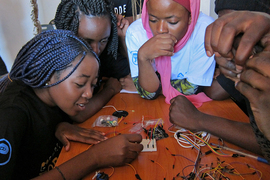
“We offer another place for knowledge”

MIT students build connections with Black and Indigenous Brazilians to investigate culture and the environment

MIT researchers win grants to develop and test 14 innovative ideas to improve education

Day of AI curriculum meets the moment

Reimagining a curriculum for tomorrow's engineers at the University of the Andes
Previous item Next item
More MIT News

Designing solutions to ensure equity in health care
Read full story →

Training manufacturing technologists to be future shop floor leaders

Characterizing social networks

MIT economics to launch new predoctoral fellowship program

Programming functional fabrics

Does technology help or hurt employment?
- More news on MIT News homepage →
Massachusetts Institute of Technology 77 Massachusetts Avenue, Cambridge, MA, USA
- Map (opens in new window)
- Events (opens in new window)
- People (opens in new window)
- Careers (opens in new window)
- Accessibility
- Social Media Hub
- MIT on Facebook
- MIT on YouTube
- MIT on Instagram

IMAGES
VIDEO
COMMENTS
Essential Algebra for Advanced High School and SAT. Discover Essential Algebra for Advanced High School and SAT, a 241-page math book in the esteemed Mathematical Reasoning series written by award-winning author and teacher with 30 years of expertise in secondary mathematics. This powerful resource teaches the 'essential' connection of ...
These books teach the mathematical concepts and skills students are expected to know per grade level. They also introduce several skills and concepts normally taught in the next grade level. Mathematical Reasoning™ helps students devise strategies to solv
The Beginning 2 book is a complete curriculum for children of age 4. These highly effective activities take children far beyond drill-and-practice by using step-by-step, discussion-based problem solving to develop a conceptual bridge between computation and the reasoning required for upper-level math. Activities and units spiral slowly ...
In today's video, I'm sharing a review of Mathematical Reasoning by Critical Thinking Co. and how I do the lessons with my daughter. The Critical Thinking Ma...
In addition to the main Mathematical Reasoning workbooks, the Critical Thinking Co. also offers a series of supplemental books to go with the program. Each supplement covers a range of grades, such as grades 2-4, 4-6, 7-9 and Essential Algebra, so they don't necessarily correlate 1:1 with the main series and are best used after completing a ...
(Grade 5) Mathematical Reasoning helps students devise strategies to solve a wide variety of math problems. This book emphasizes problem-solving and computation to build the math reasoning skills necessary for success in higher-level math and math assessments. This book is written to the standards of the National Council of Teachers of Mathematics.
I REALLY love this Critical Thinking Co Mathematical Reasoning Level D workbook! This is the first Mathematical Reasoning book we're going to use but I'm 100% getting the previous levels for my younger kiddo and all the higher levels for my oldest as we progress to them. Note I bought this as a returned copy.
Definition. Mainstream educational psychologists view critical thinking (CT) as the strategic use of a set of reasoning skills for developing a form of reflective thinking that ultimately optimizes itself, including a commitment to using its outcomes as a basis for decision-making and problem solving.
Understanding Algebra I: Detailed Solutions PDF 7-9. Mathematical Reasoning™ Grades 2-4 Supplement reinforces 2nd, 3rd, and 4th grade math concepts by helping students devise strategies to solve a wide variety of math problems as they develop analytical and critical thinking skills necessary for success in.
Complimentary Product Received! We have been long-term users and reviewers of The Critical Thinking Co. My son's first math book was Mathematical Reasoning Beginning 1 and his first logic book was Building Thinking Skills Beginning 1 we developed a love for this company's products over the years. I was really excited when granted an opportunity to review the Mathematical Reasoning Level E ...
content in order for students to understand critical-thinking methods and develop the skills needed to apply them. 5. Demonstrating and encouraging transfer While individual components of critical thinking might manifest themselves differently across subjects, on the whole critical-thinking skills transfer fluidly between domains.
Description & Features Forget boring math lessons and dreaded drill sheets. This fun, colorful 256-page book uses engaging lessons with easy-to-follow explanations, examples, and charts to make kindergarten mathematical concepts easy to understand. It can be used as a textbook or a comprehensive workbook with you
The Critical Thinking Co. publishes PreK-12+ books and software to develop critical thinking in core subject areas. The store will not work correctly when cookies are disabled. ... "The fun thing about Mathematical Reasoning™ is that every page is a little different. No rote facts or boredom here!
The Trifecta: "Language Smarts," "Mathematical Reasoning" and Vocabulary Virtuoso. No prep time required. Vocabulary program is outstanding. Appeals to different learning styles (creative and logical) ... ""I have been using The Critical Thinking Co.™ materials for 17 years. Our 1st son is an honor student at the University, and our ...
Mathematical Reasoning. A combination of challenging content, very attractive layout, variety, significant incorporation of thinking skills, and relatively low cost merited the Mathematical Reasoning series a place among my 102 Top Picks. This series should work very well for home educators since it works best when taught one-on-one or in small ...
The Critical Thinking Consortium, Elevate math education with TC²'s approach to critical thinking, emphasizing reasoning abilities and strong understanding of concepts. Shop; ... TC²'s approach to math embraces the idea that sustained quality mathematical thinking, or reasoning, is the key to the success of current and future generations of ...
Description & Features Forget boring math lessons and dreaded drill sheets. This fun, colorful 384-page book uses engaging lessons with easy-to-follow explanations, examples, and charts to make third grade mathematical concepts easy to understand. It can be used as a textbook or a comprehensive workbook with your
and allows students to consider others' reasoning to advance their own mathematical understanding. Creating a learning community is essential for mathematical practices that are interpersonal by nature, such as MP.3. Co-create shared agreements or ground rules about how all members of the learning community will
A student-centered, hands-on learning approach helps students develop critical thinking, creativity, and problem-solving skills. "The curriculum places emphasis on fostering student competence and cultivating a culture where it's acceptable not to have all the answers," says teacher Lionel Palacio.